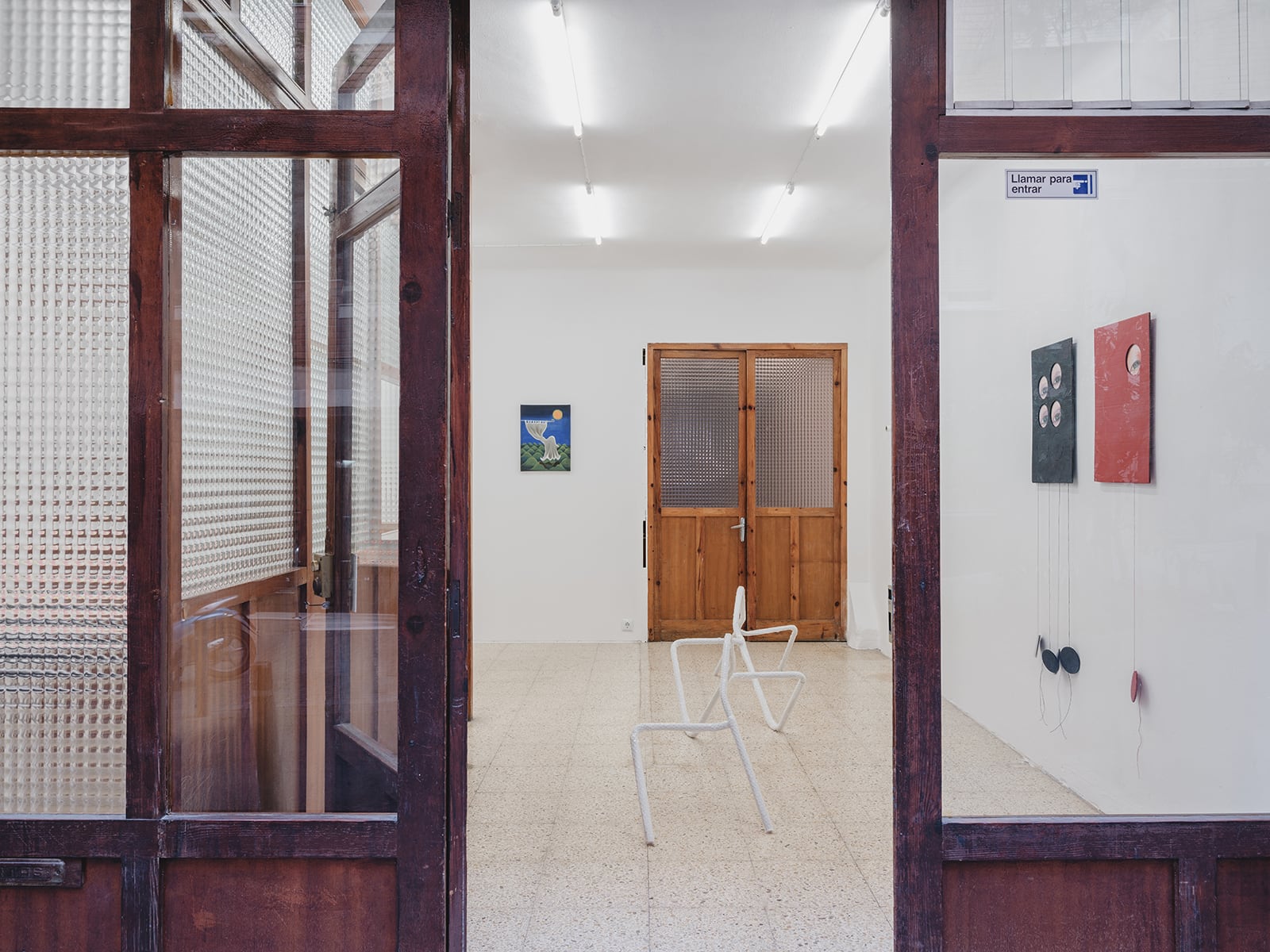 Exhibition view
Exhibition view
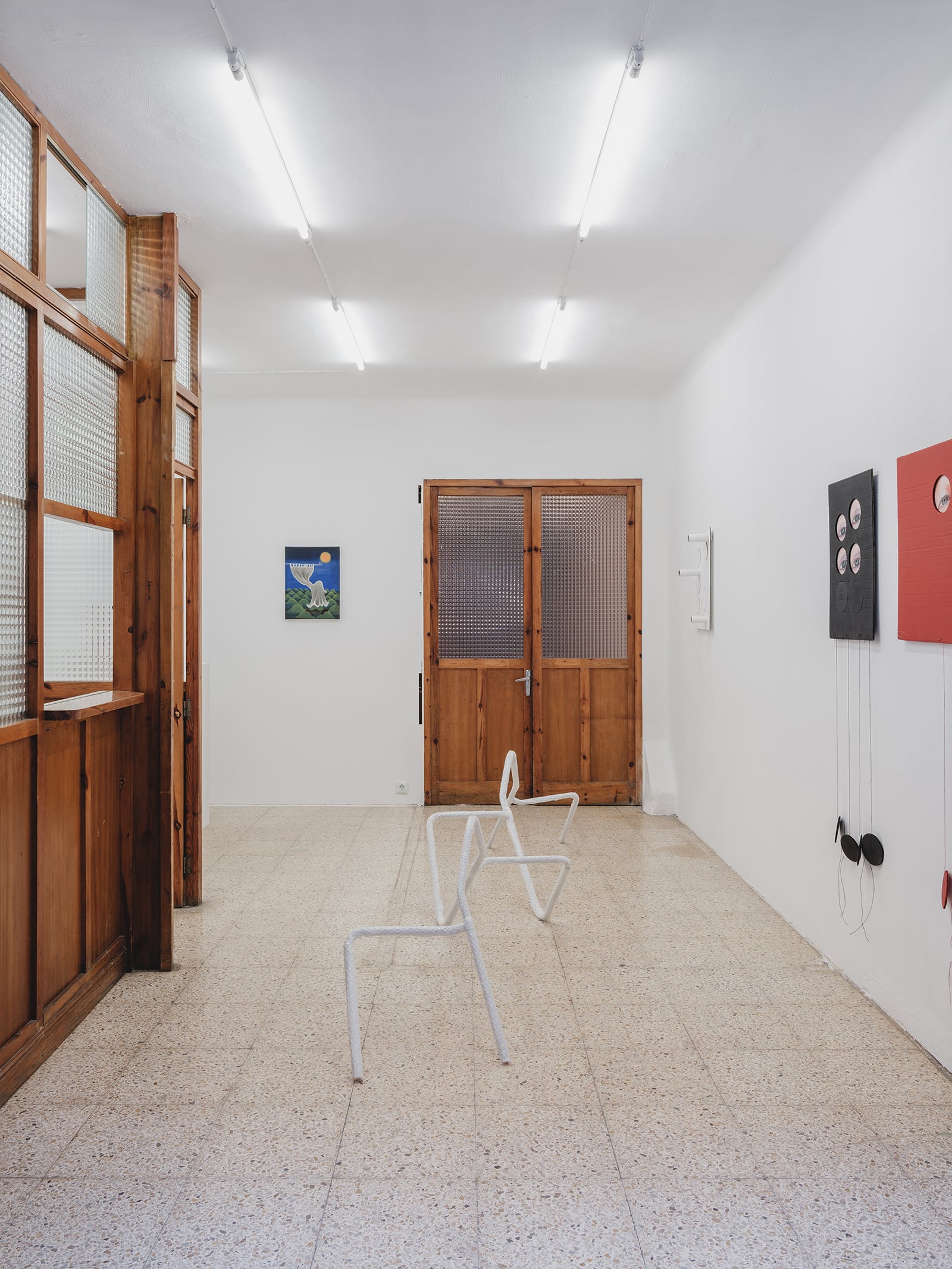 Exhibition view
Exhibition view
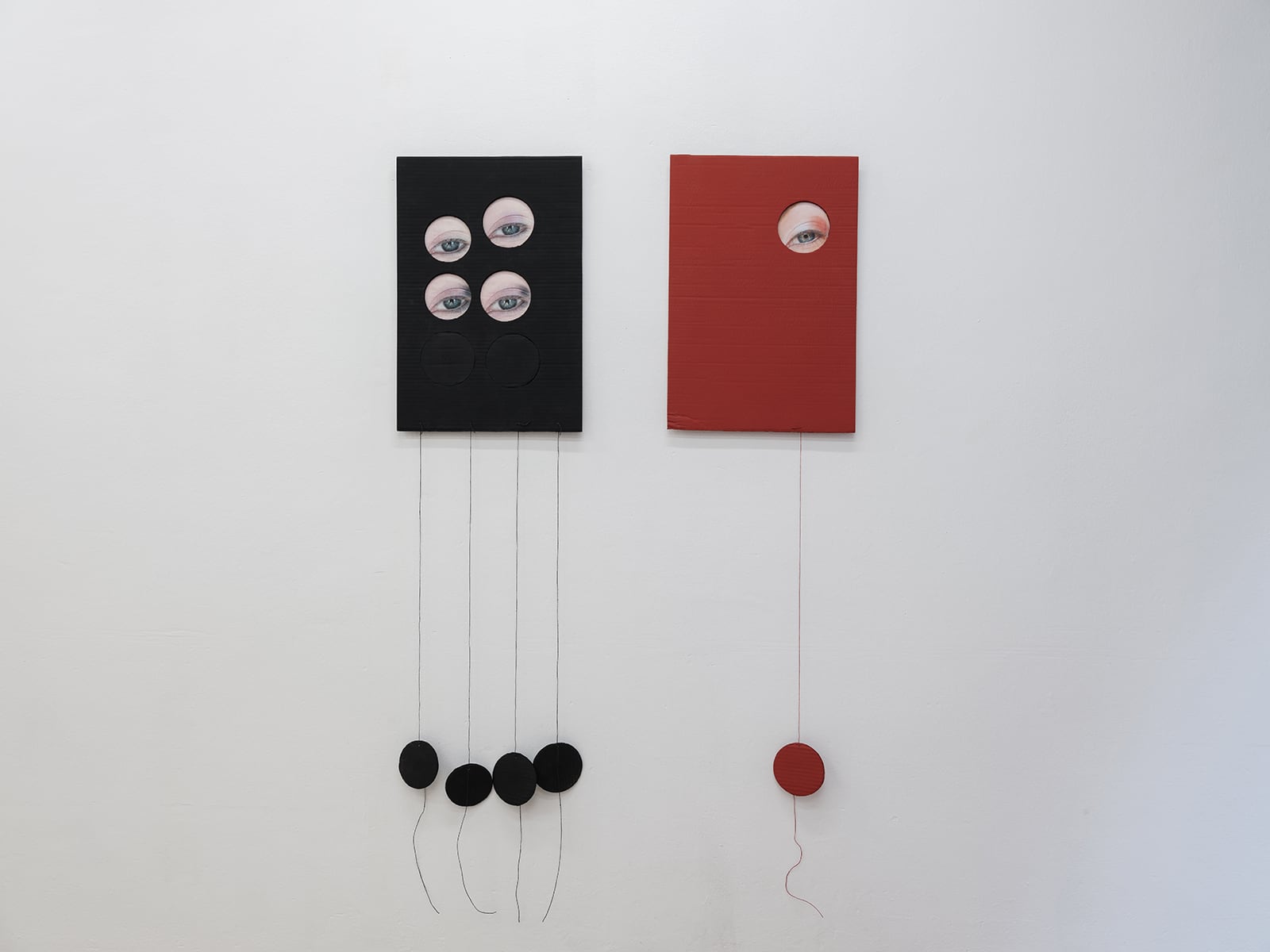 Clémentine Adou, Awaken, (black, red), 2017, cardboard, paint, inkjet print, string, 38 x 130 cm (each)
Clémentine Adou, Awaken, (black, red), 2017, cardboard, paint, inkjet print, string, 38 x 130 cm (each)
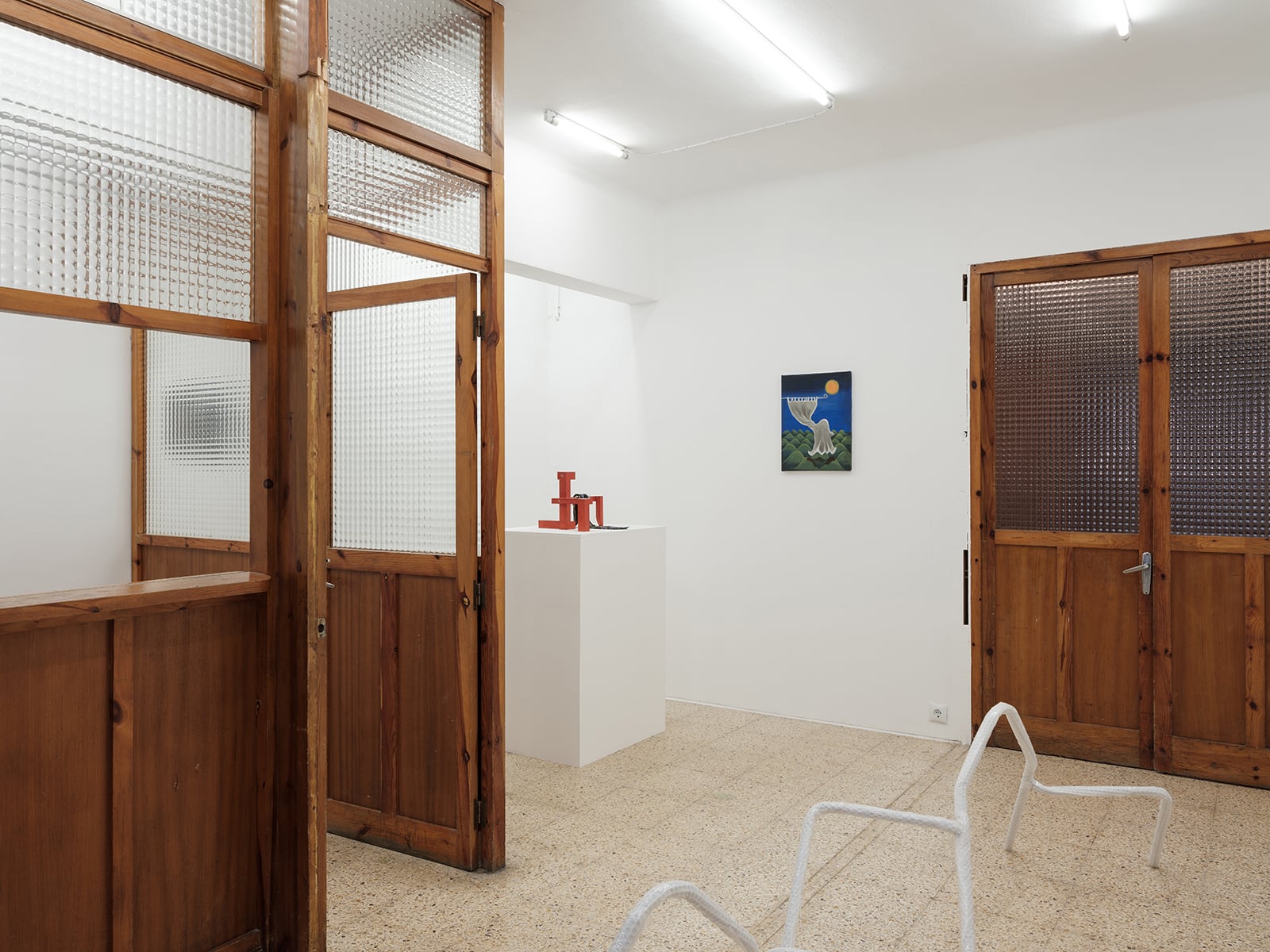 Exhibition view
Exhibition view
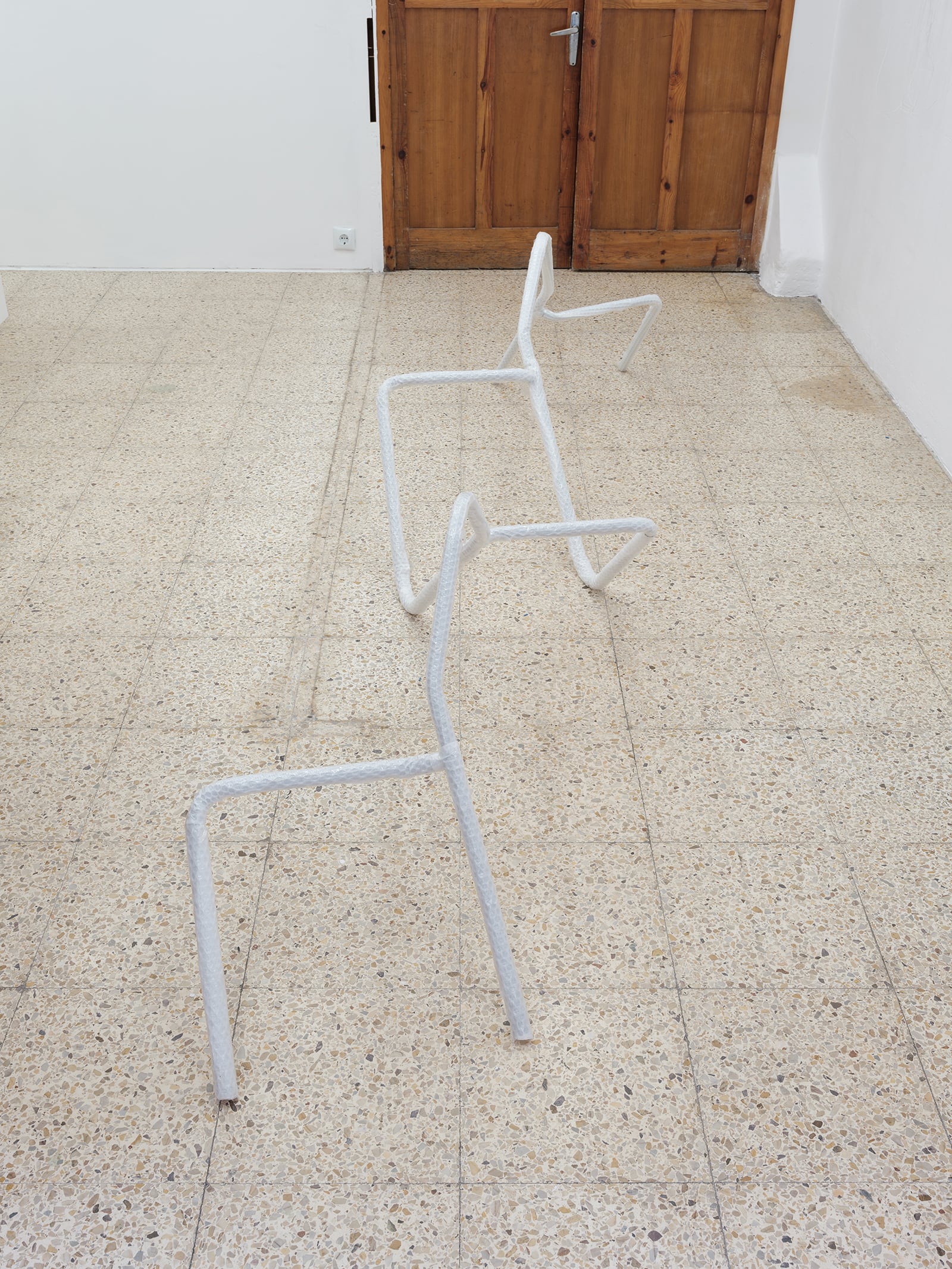 Álex Palacín, Cranc, 2022, steel, bubble wrap, 260 x 130 x 63 cm
Álex Palacín, Cranc, 2022, steel, bubble wrap, 260 x 130 x 63 cm
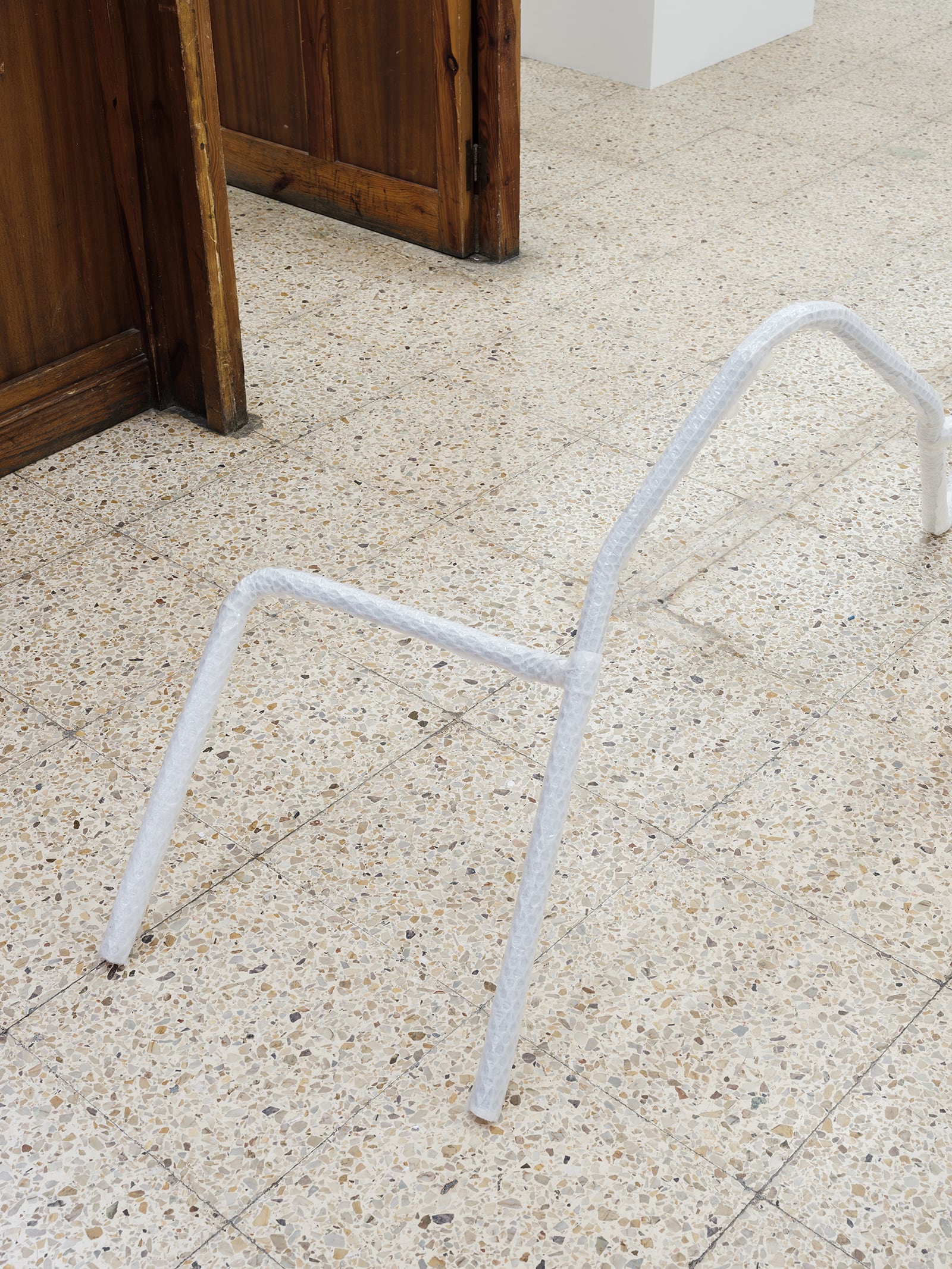 Álex Palacín, Cranc, 2022, detail
Álex Palacín, Cranc, 2022, detail
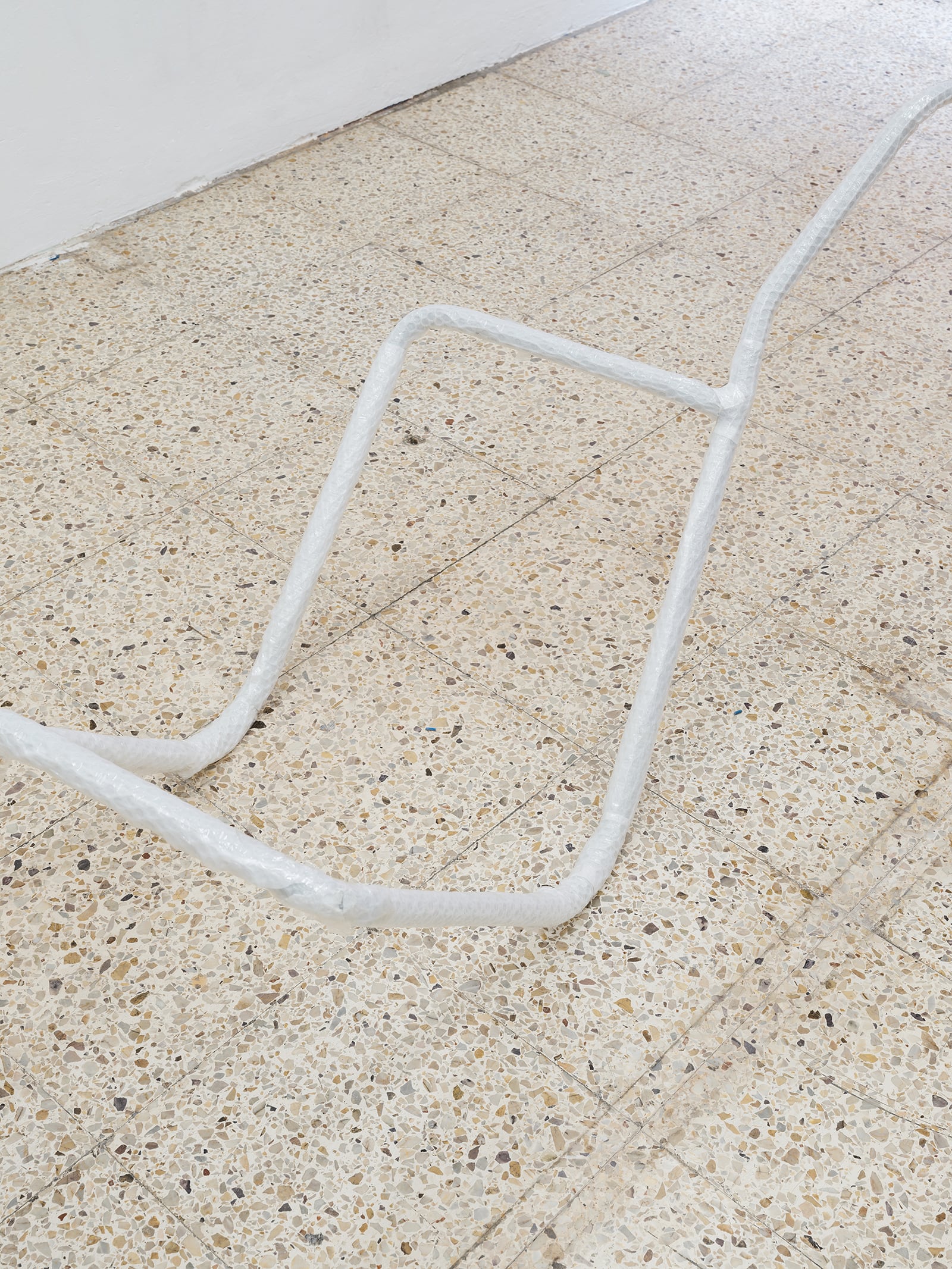 Álex Palacín, Cranc, 2022, detail
Álex Palacín, Cranc, 2022, detail
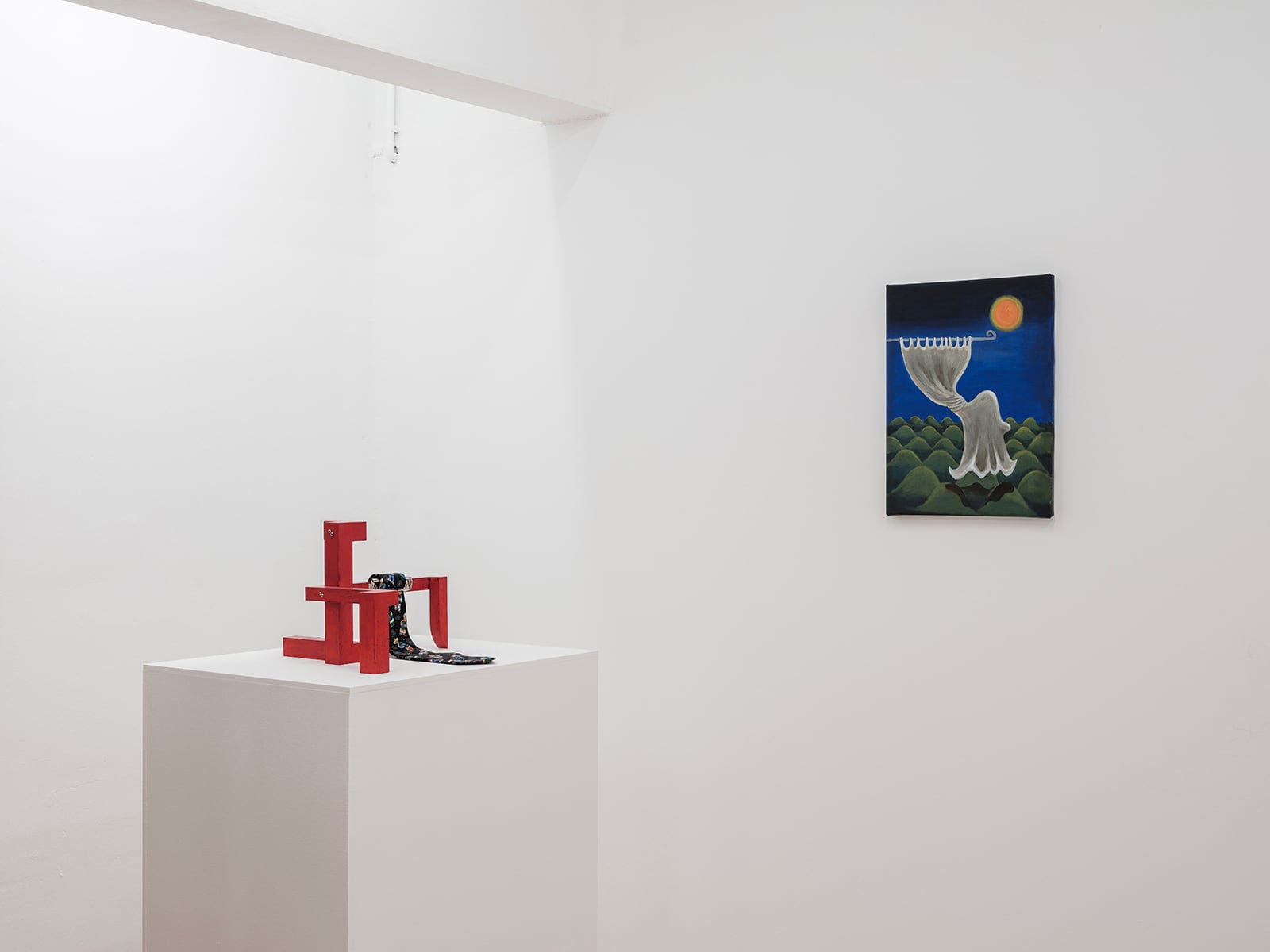 Exhibition view
Exhibition view
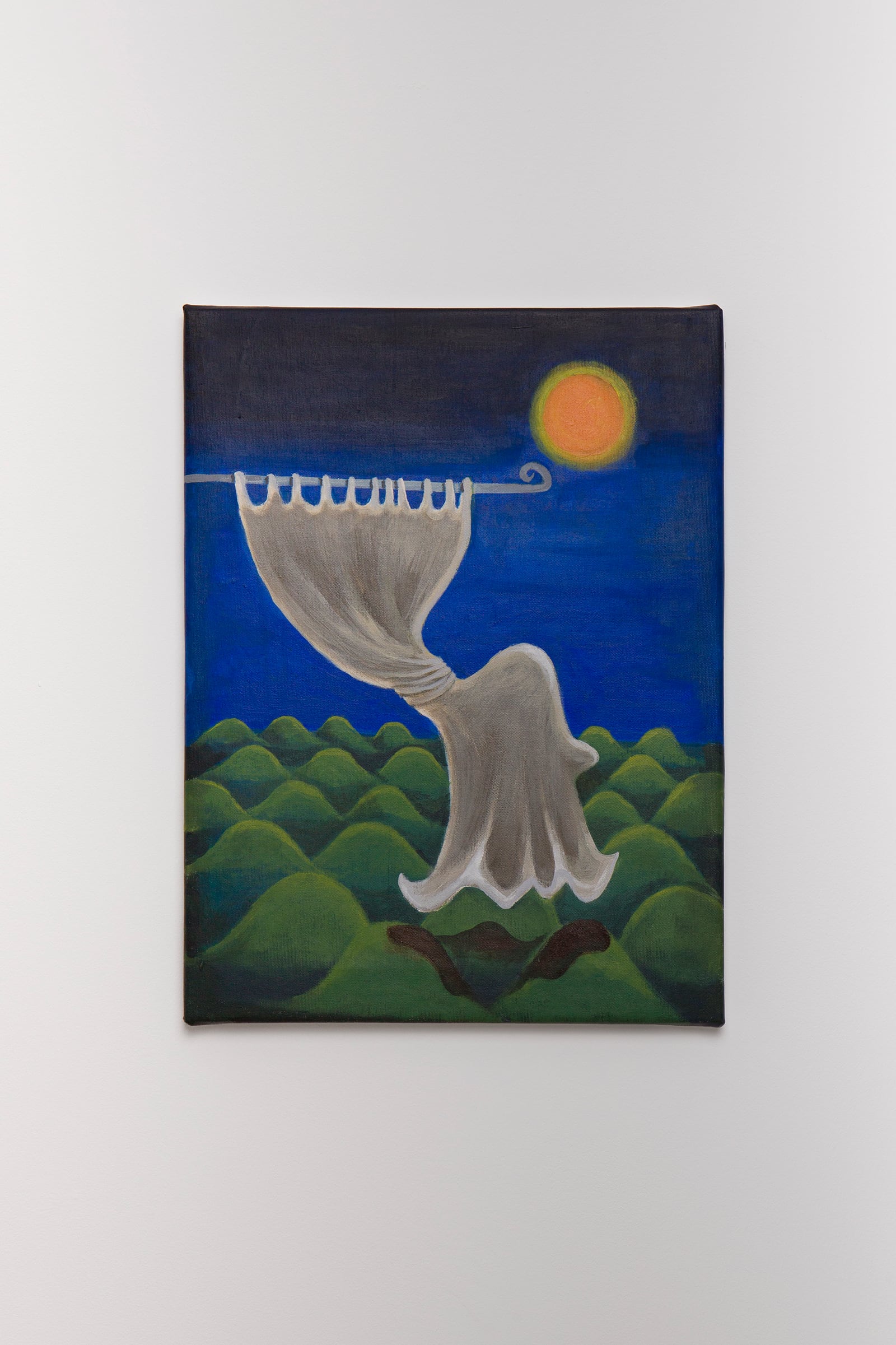 Mayra vom Brocke, Un fantasma de aire me acaricio la cara, 2022, oil on canvas, 50 x 36 cm
Mayra vom Brocke, Un fantasma de aire me acaricio la cara, 2022, oil on canvas, 50 x 36 cm
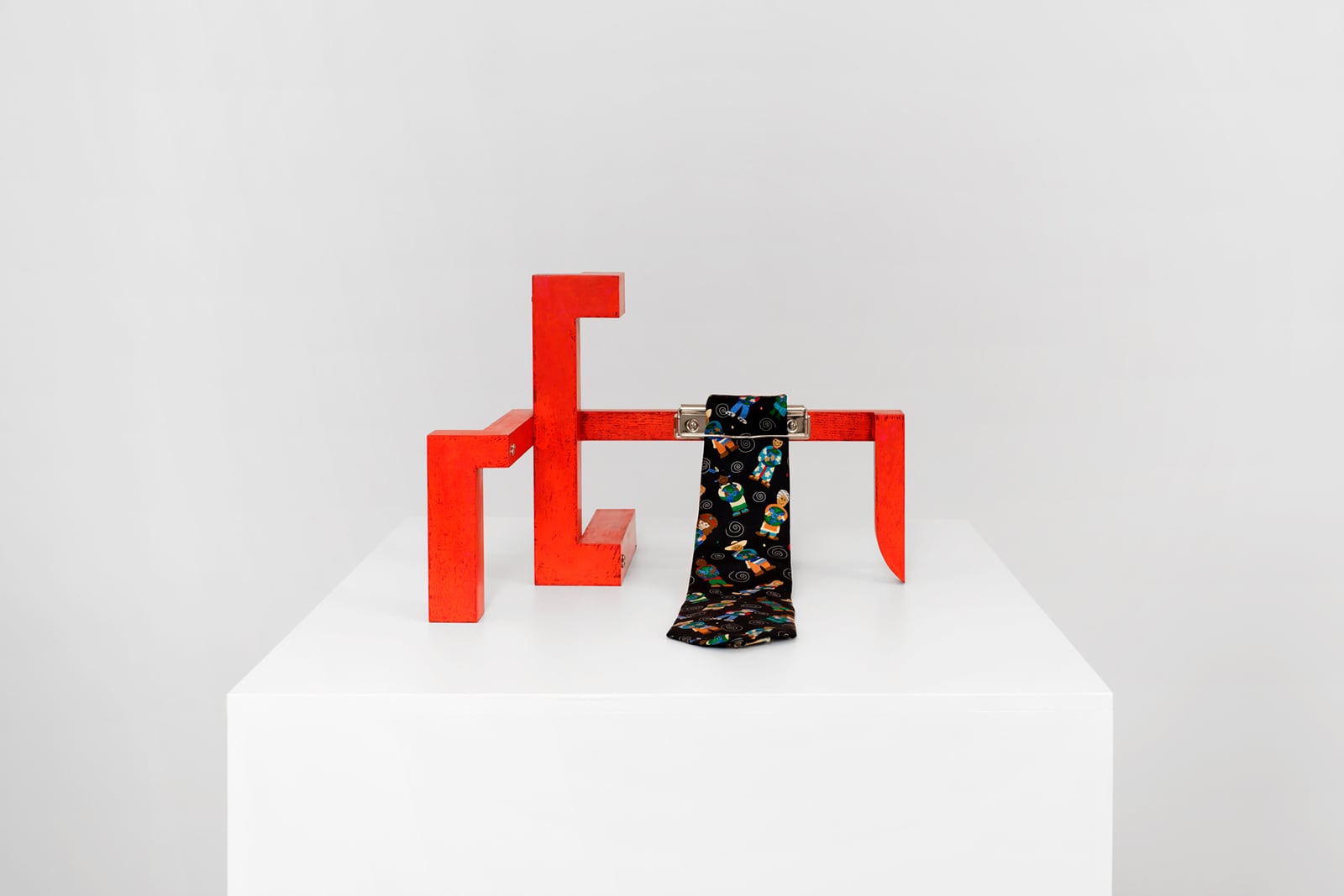 Naoki Sutter-Shudo, Fe, 2021, wood, enamel, stainless steel, polyester, snakeskin, 32,6 x 38,5 x 54 cm. Courtesy the artist and Crèvecœur, Paris
Naoki Sutter-Shudo, Fe, 2021, wood, enamel, stainless steel, polyester, snakeskin, 32,6 x 38,5 x 54 cm. Courtesy the artist and Crèvecœur, Paris
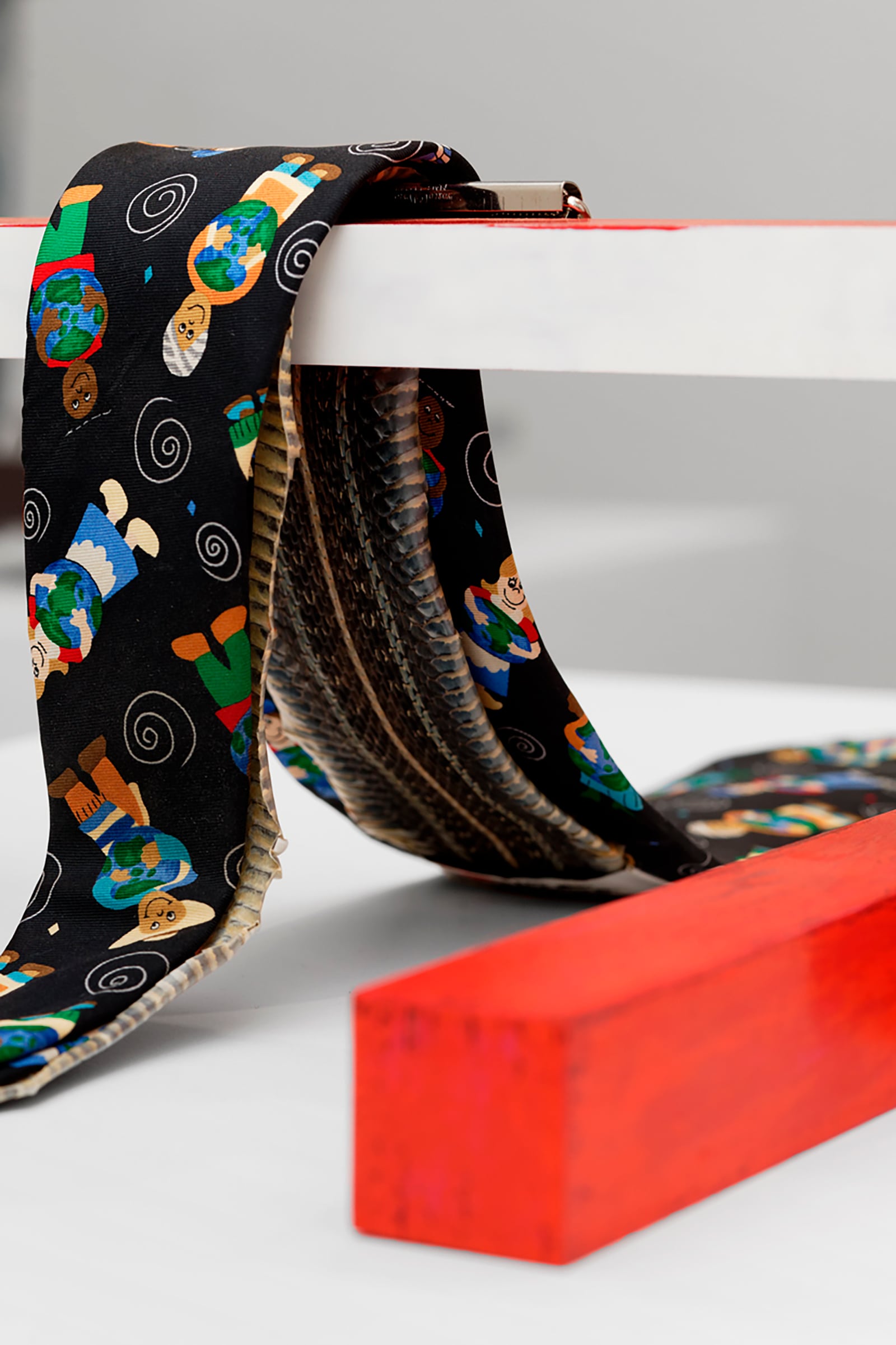 Naoki Sutter-Shudo, Fe, 2021, detail. Courtesy the artist and Crèvecœur, Paris
Naoki Sutter-Shudo, Fe, 2021, detail. Courtesy the artist and Crèvecœur, Paris
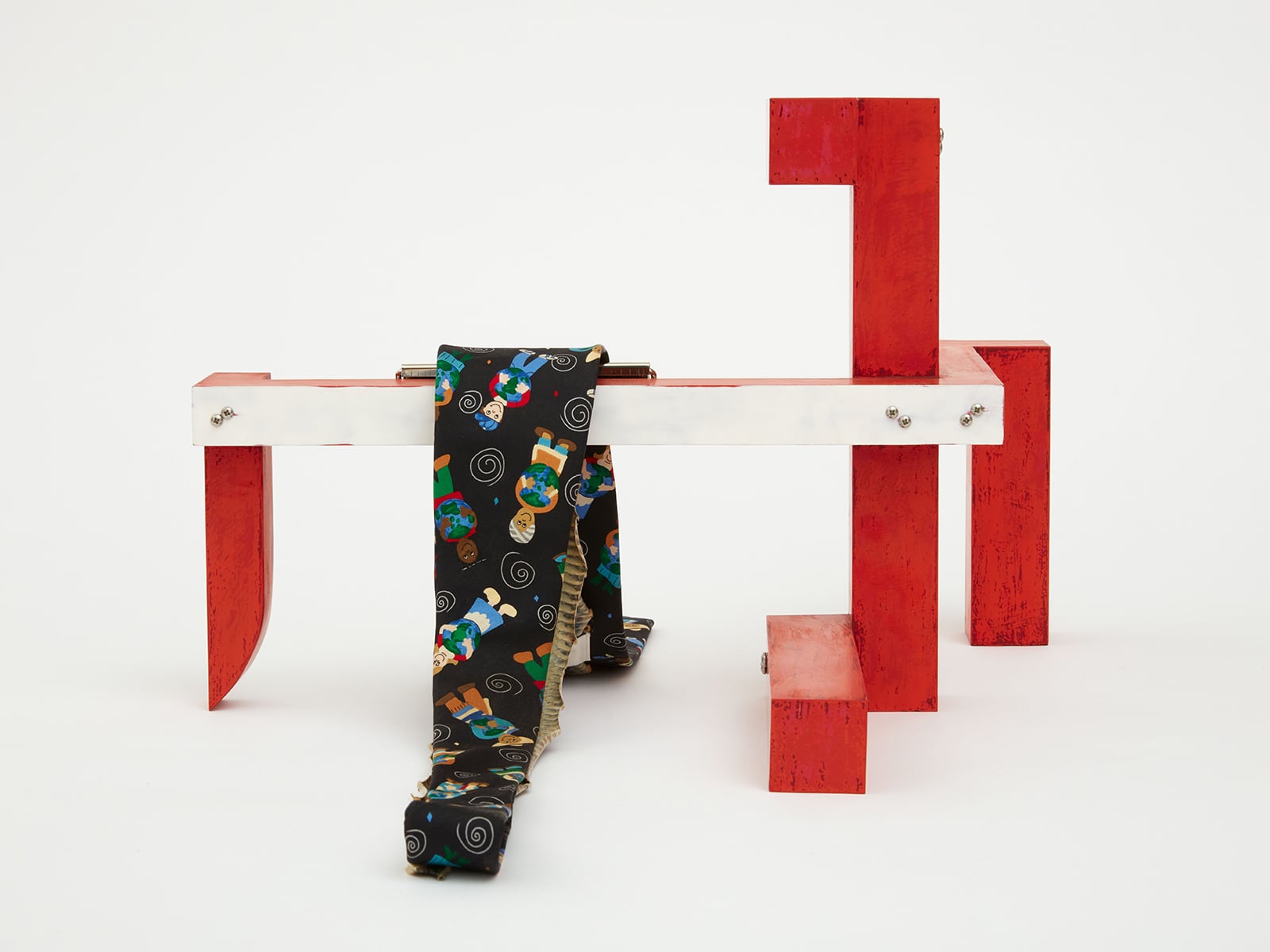 Naoki Sutter-Shudo, Fe, 2021, wood, enamel, stainless steel, polyester, snakeskin, 32,6 x 38,5 x 54 cm. Courtesy the artist and Crèvecœur, Paris
Naoki Sutter-Shudo, Fe, 2021, wood, enamel, stainless steel, polyester, snakeskin, 32,6 x 38,5 x 54 cm. Courtesy the artist and Crèvecœur, Paris
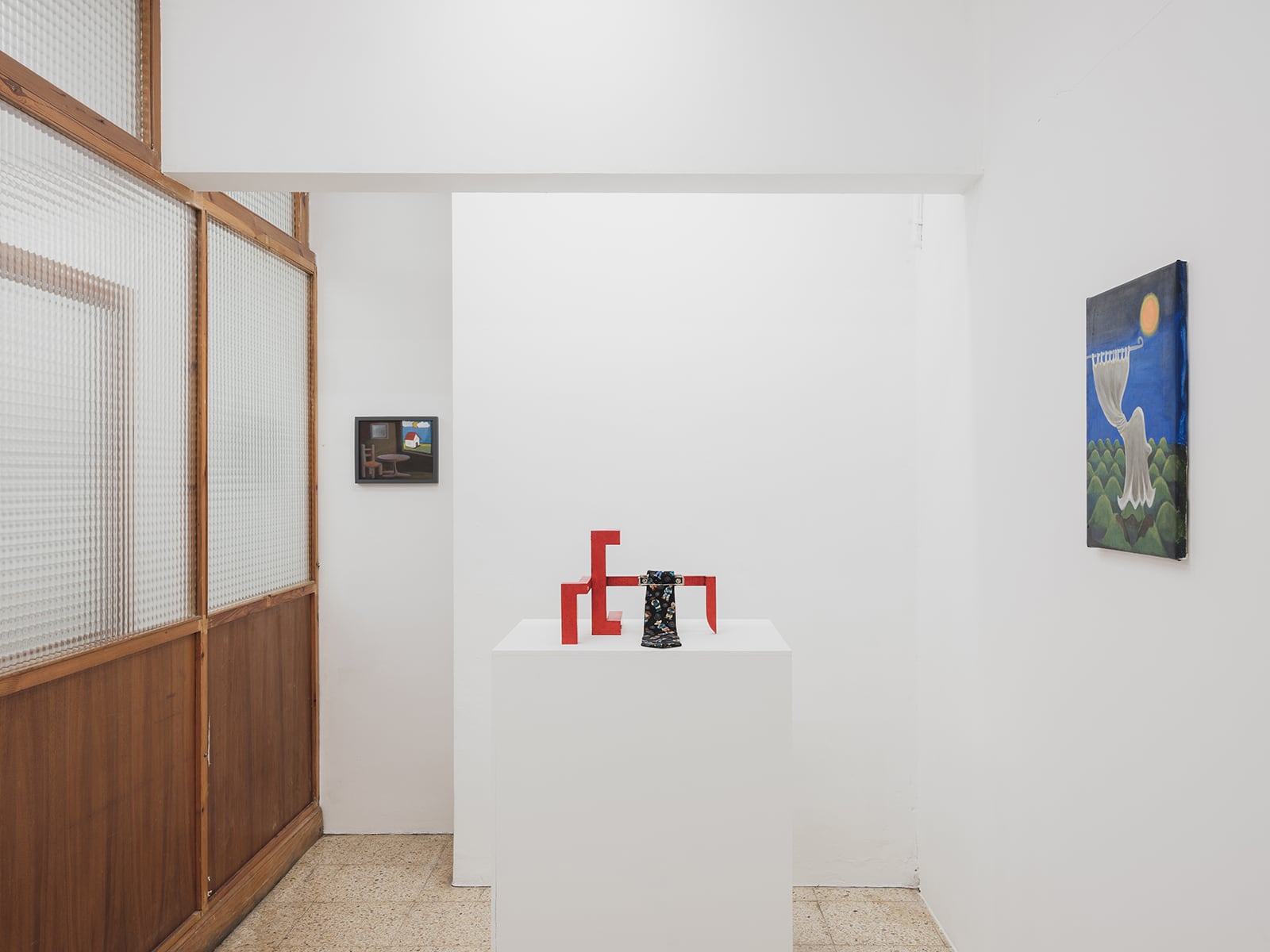 Exhibition view
Exhibition view
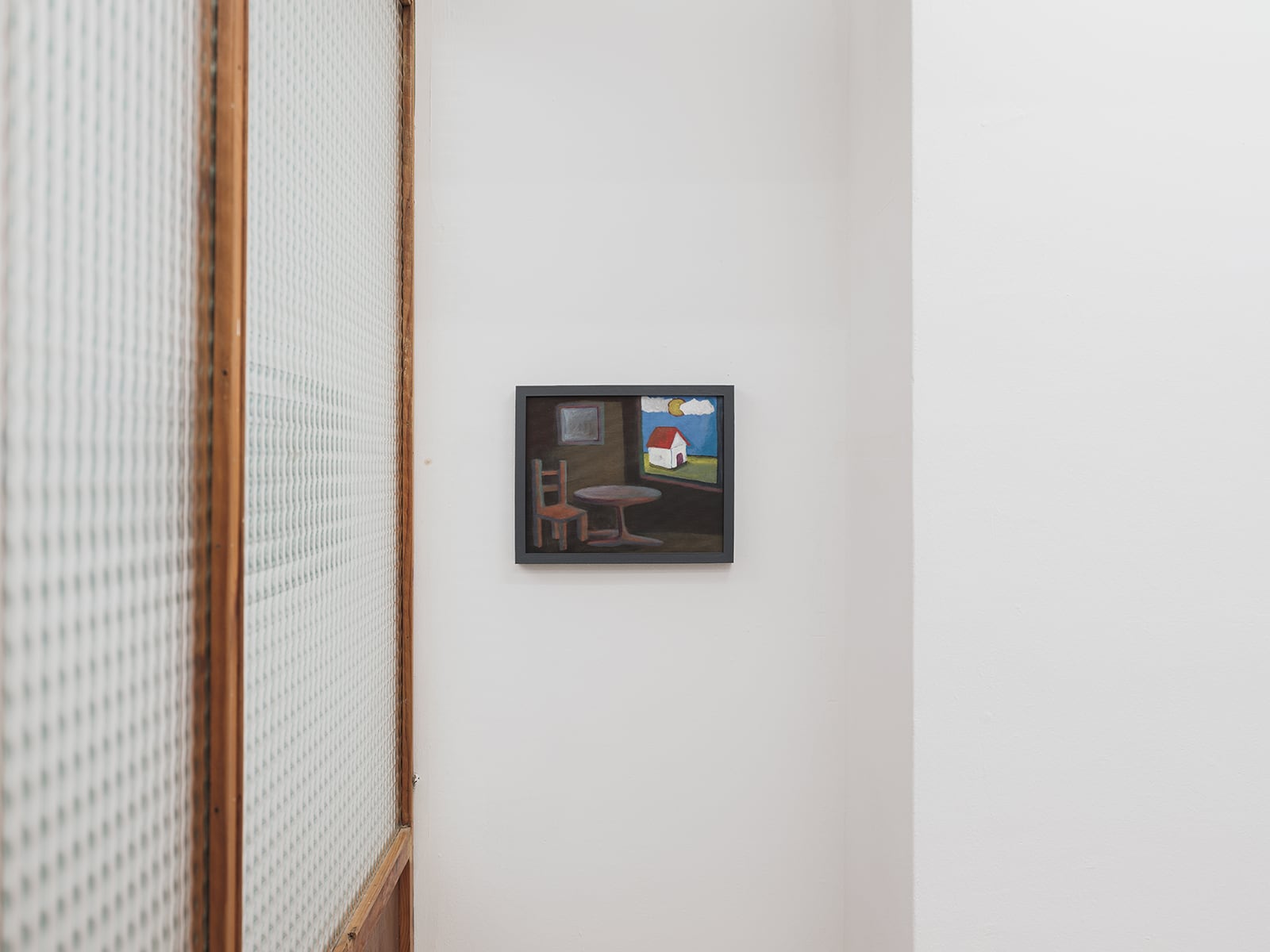 Exhibition view
Exhibition view
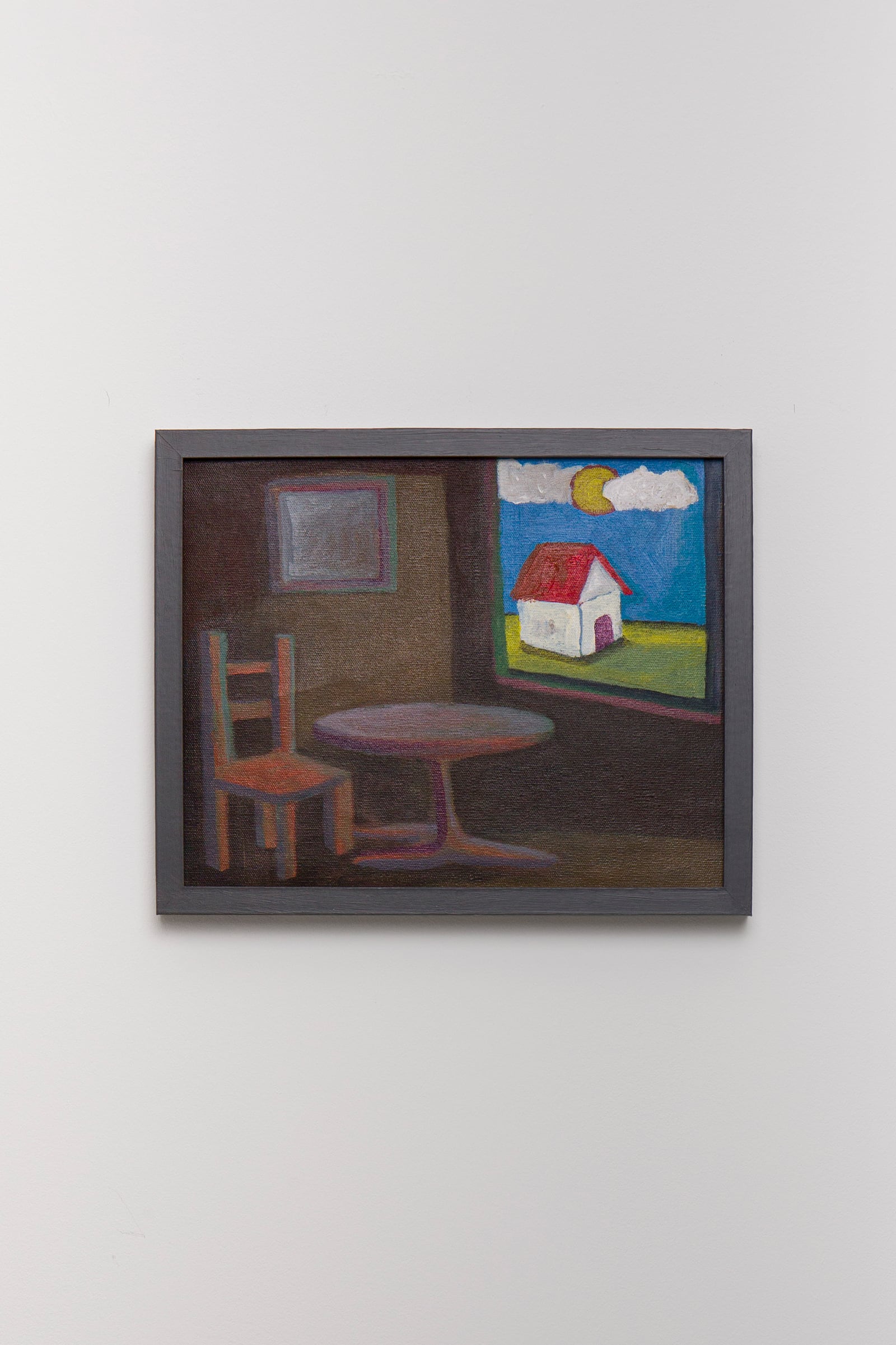 Mayra vom Brocke, ¿Quieres venir a casa?, 2022, oil on canvas, 20 x 35 cm
Mayra vom Brocke, ¿Quieres venir a casa?, 2022, oil on canvas, 20 x 35 cm
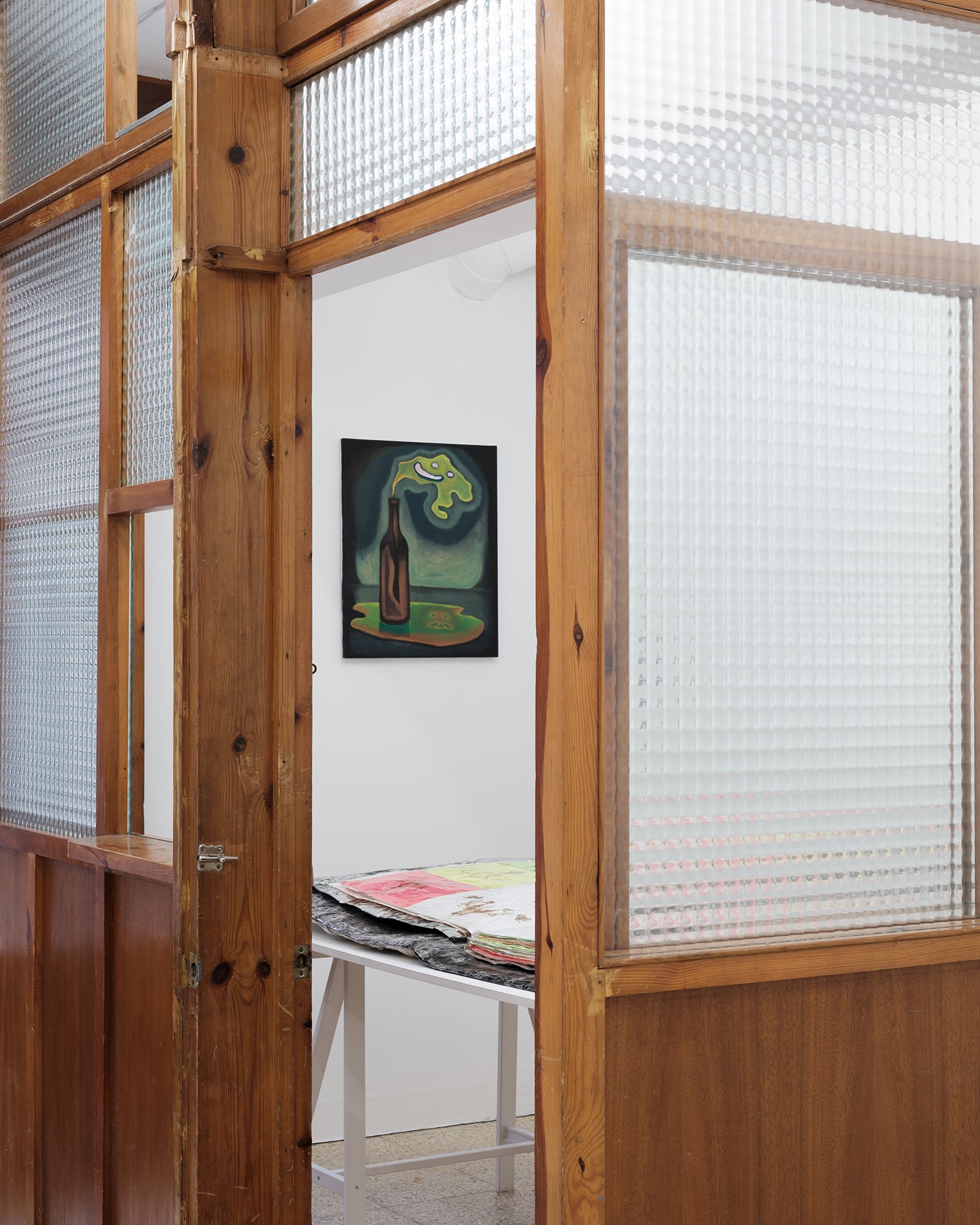 Exhibition view
Exhibition view
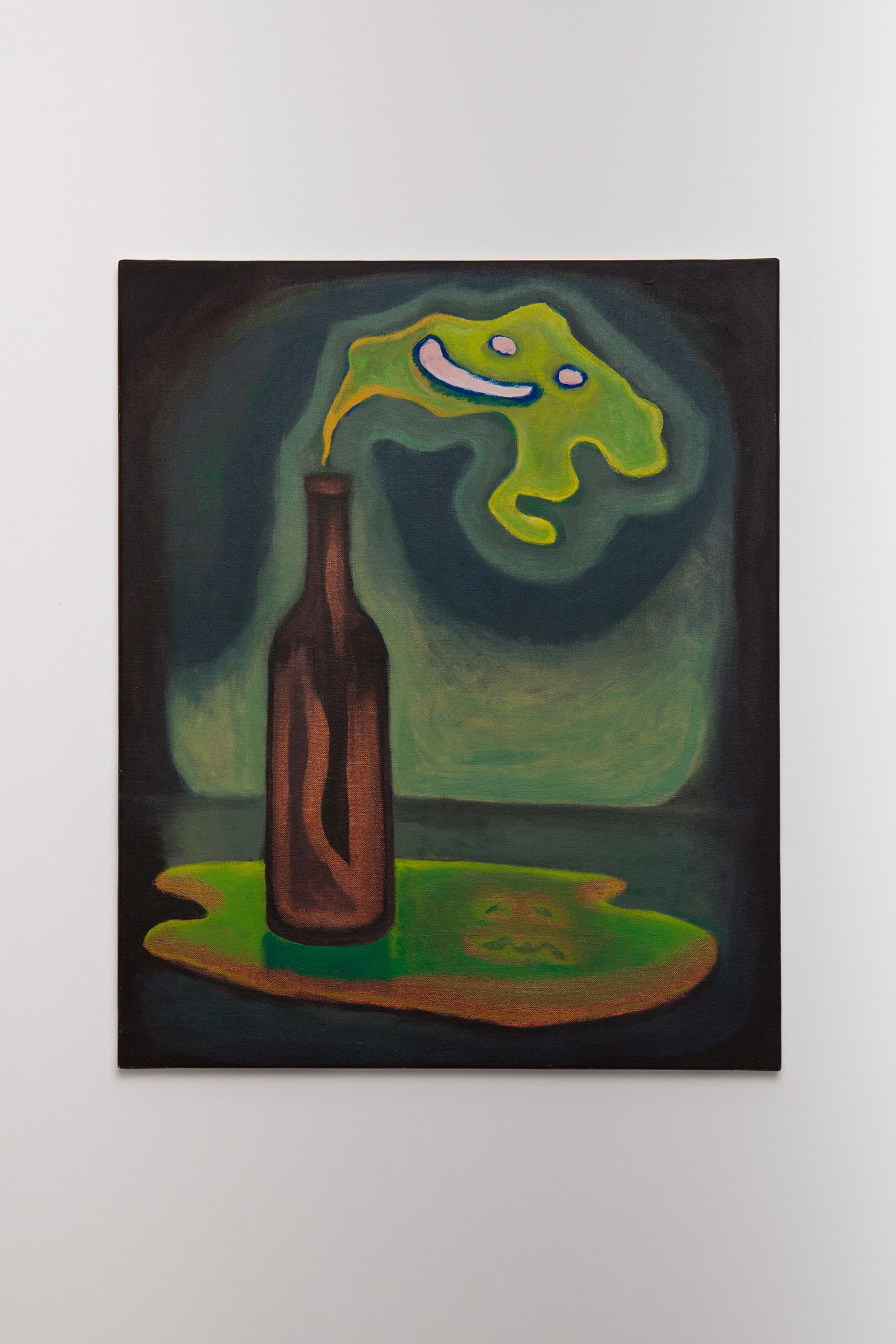 Mayra vom Brocke, Los diablos de la bebida, 2022, oil on canvas, 60 x 40 cm
Mayra vom Brocke, Los diablos de la bebida, 2022, oil on canvas, 60 x 40 cm
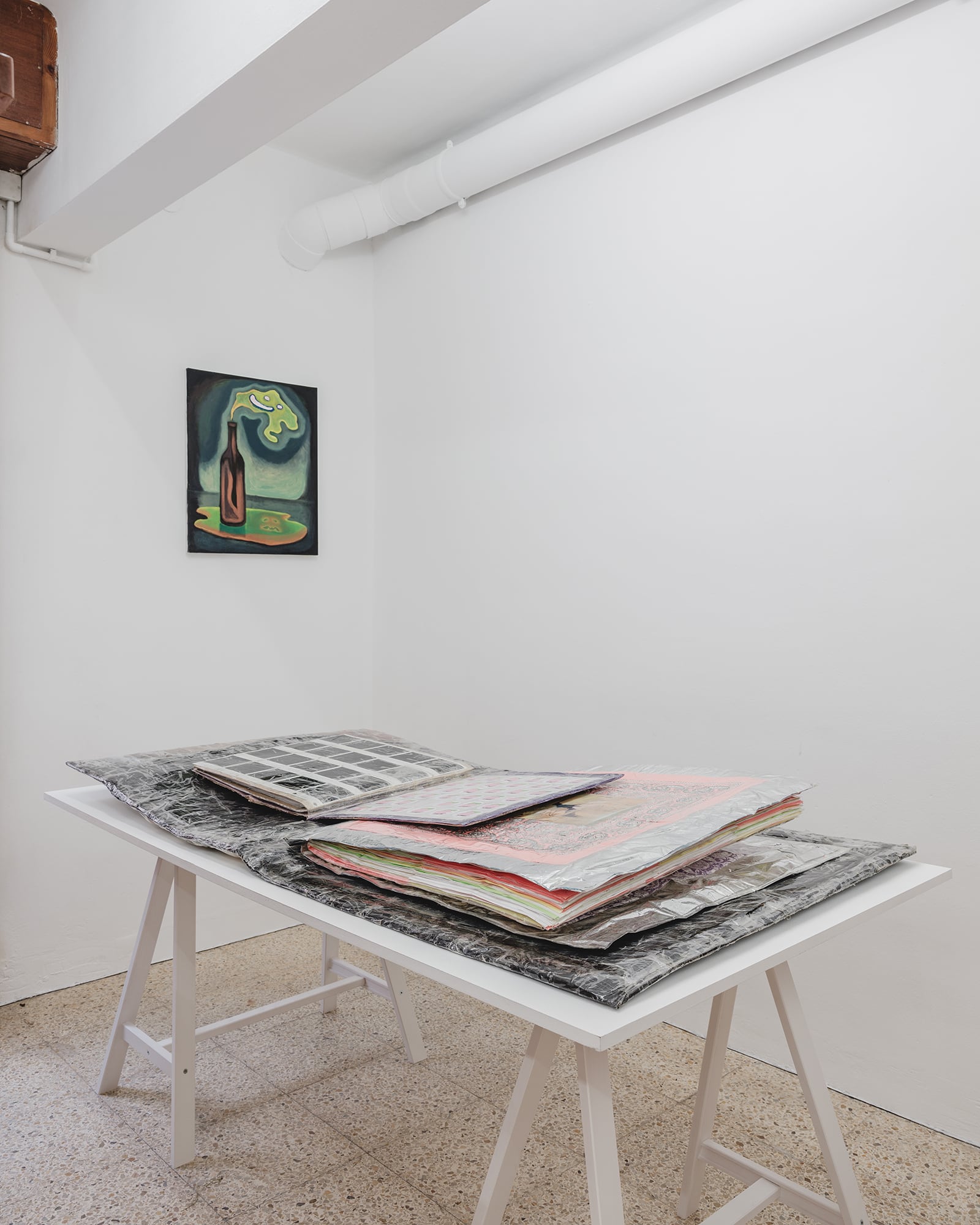 Exhibition view
Exhibition view
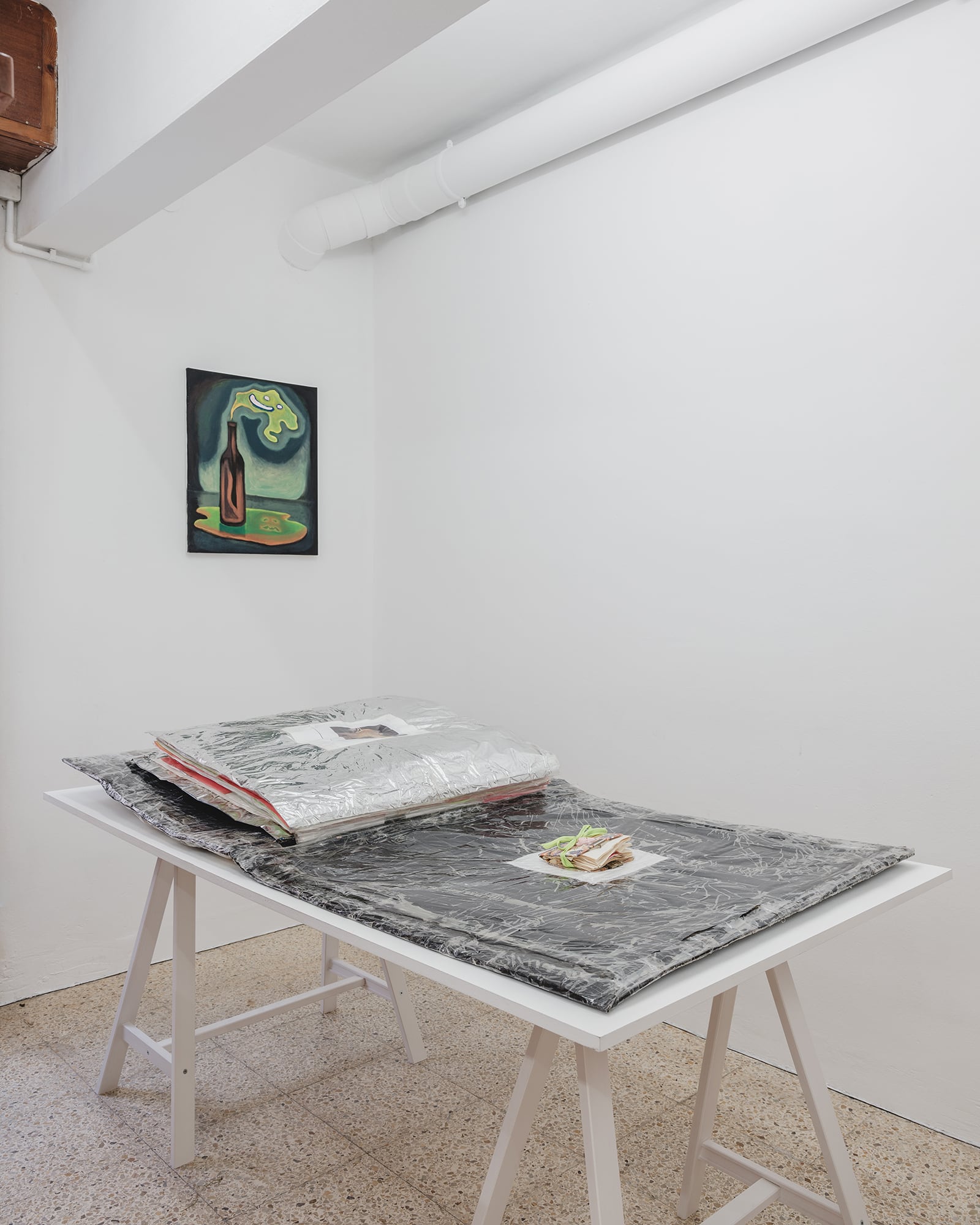 Exhibition view
Exhibition view
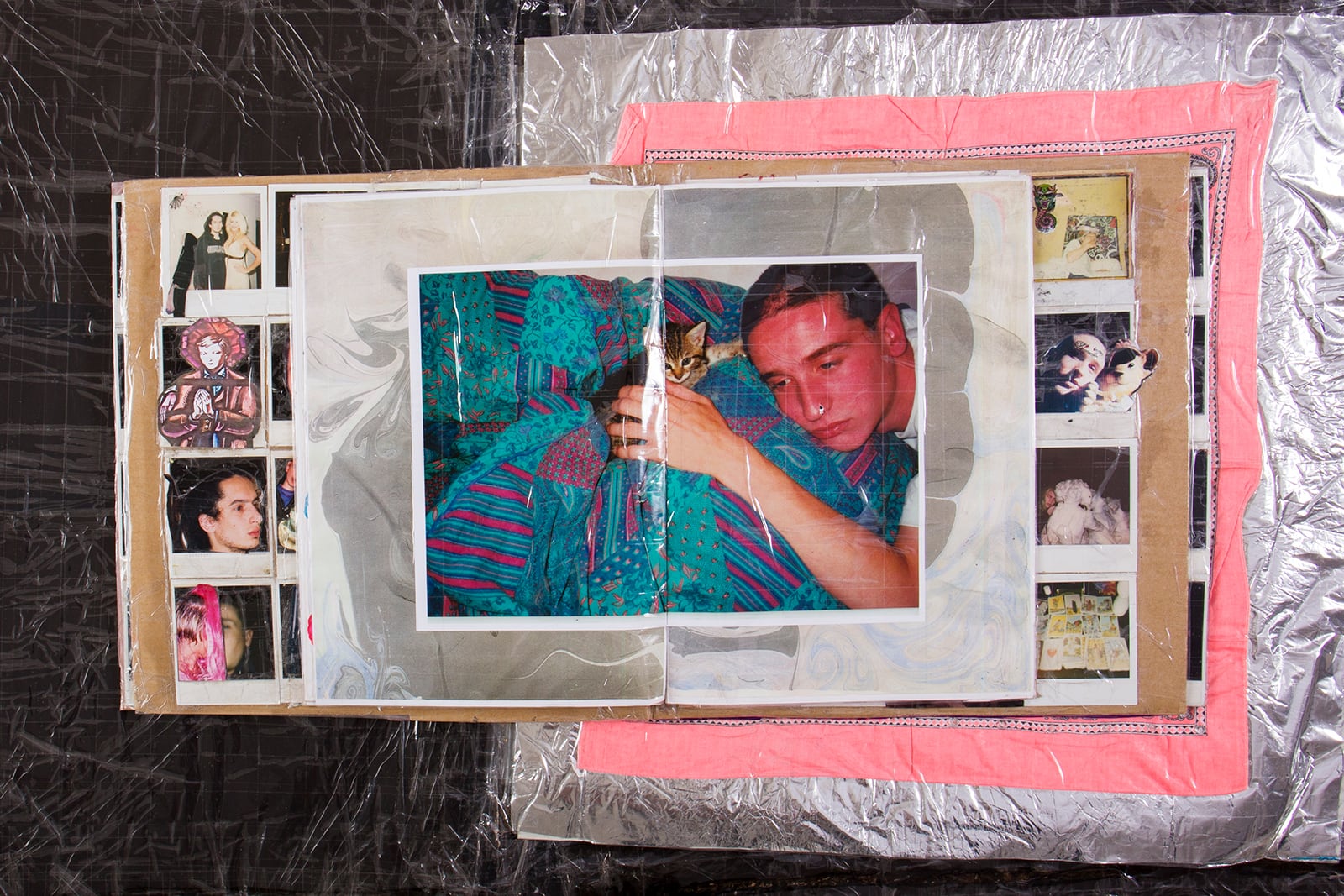 Thomas Cap de Ville, LIVRE 3, 2017, garbage bags, scotch tape, shells, ceramics, plastics, metal, mirrors, stones, lettering, aluminum foil, fabrics, Polaroids, photo prints, paper prints, stickers, colored pencils, ballpoint pens, felt pens, Poscas, blood, red ink, oil pastels, key rings, jewelry, 80 X 160 cm (open). Courtesy of the artist and Exo Exo
Thomas Cap de Ville, LIVRE 3, 2017, garbage bags, scotch tape, shells, ceramics, plastics, metal, mirrors, stones, lettering, aluminum foil, fabrics, Polaroids, photo prints, paper prints, stickers, colored pencils, ballpoint pens, felt pens, Poscas, blood, red ink, oil pastels, key rings, jewelry, 80 X 160 cm (open). Courtesy of the artist and Exo Exo
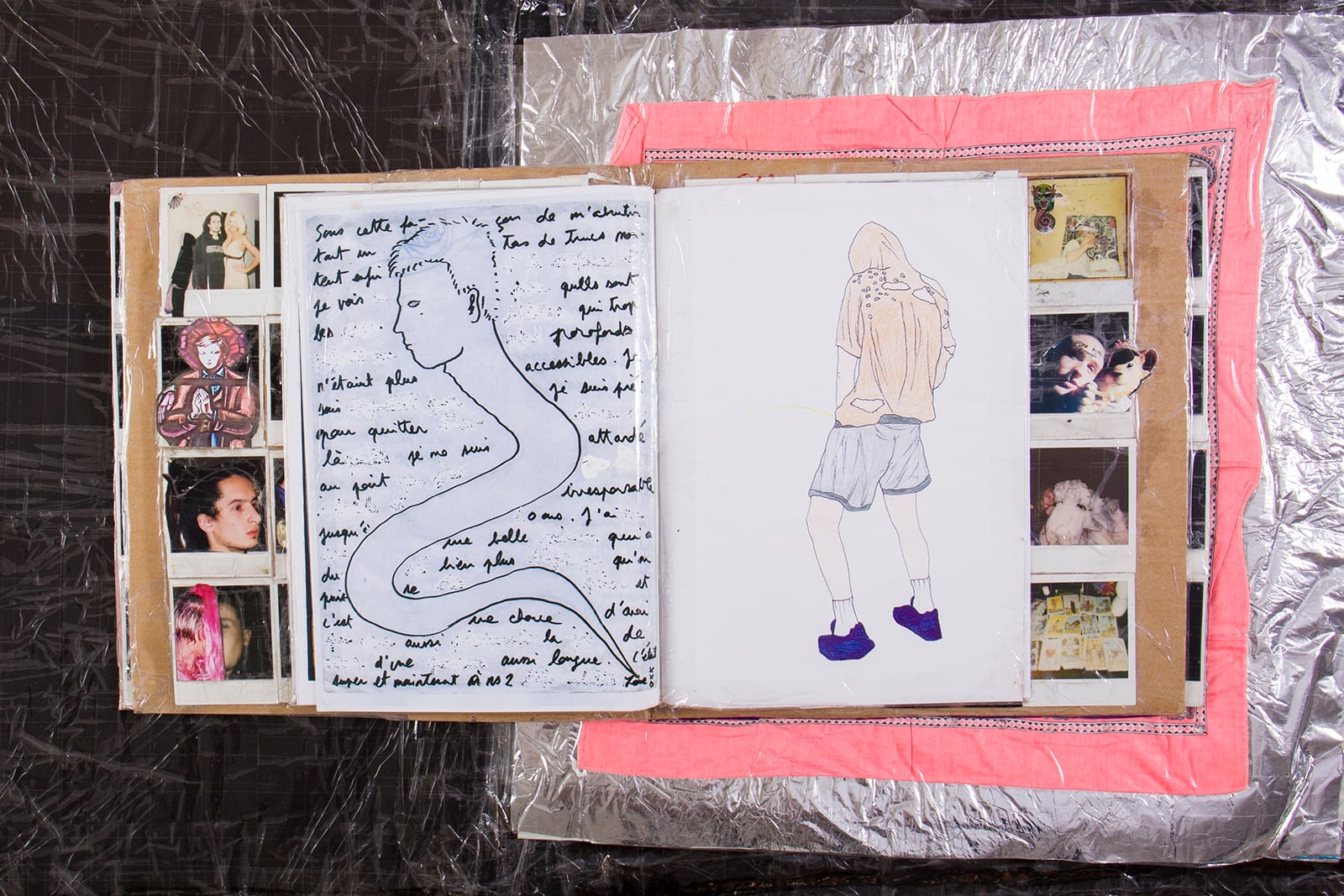 Thomas Cap de Ville, LIVRE 3, 2017, garbage bags, scotch tape, shells, ceramics, plastics, metal, mirrors, stones, lettering, aluminum foil, fabrics, Polaroids, photo prints, paper prints, stickers, colored pencils, ballpoint pens, felt pens, Poscas, blood, red ink, oil pastels, key rings, jewelry, 80 X 160 cm (open). Courtesy of the artist and Exo Exo
Thomas Cap de Ville, LIVRE 3, 2017, garbage bags, scotch tape, shells, ceramics, plastics, metal, mirrors, stones, lettering, aluminum foil, fabrics, Polaroids, photo prints, paper prints, stickers, colored pencils, ballpoint pens, felt pens, Poscas, blood, red ink, oil pastels, key rings, jewelry, 80 X 160 cm (open). Courtesy of the artist and Exo Exo
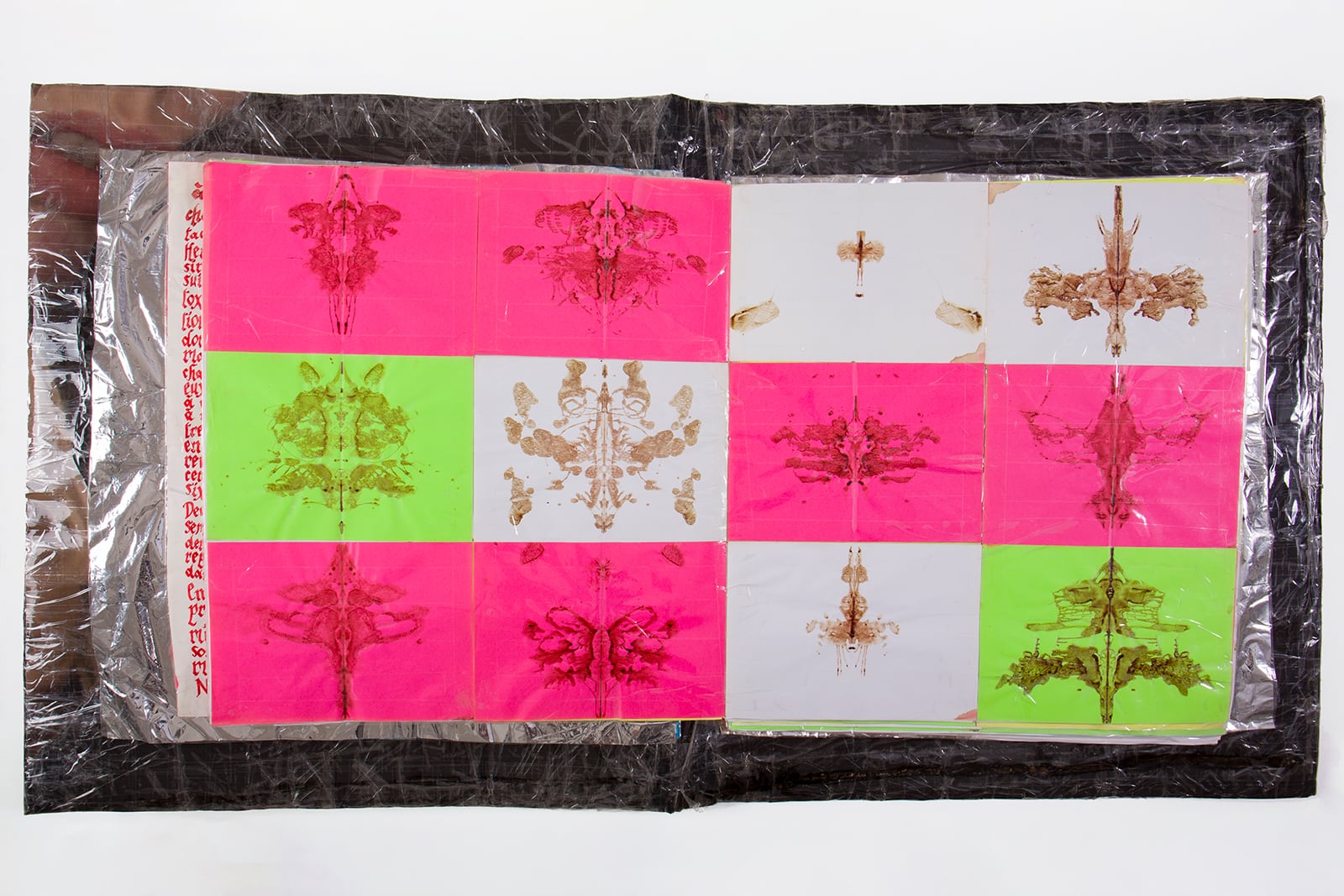 Thomas Cap de Ville, LIVRE 3, 2017, garbage bags, scotch tape, shells, ceramics, plastics, metal, mirrors, stones, lettering, aluminum foil, fabrics, Polaroids, photo prints, paper prints, stickers, colored pencils, ballpoint pens, felt pens, Poscas, blood, red ink, oil pastels, key rings, jewelry, 80 X 160 cm (open). Courtesy of the artist and Exo Exo
Thomas Cap de Ville, LIVRE 3, 2017, garbage bags, scotch tape, shells, ceramics, plastics, metal, mirrors, stones, lettering, aluminum foil, fabrics, Polaroids, photo prints, paper prints, stickers, colored pencils, ballpoint pens, felt pens, Poscas, blood, red ink, oil pastels, key rings, jewelry, 80 X 160 cm (open). Courtesy of the artist and Exo Exo
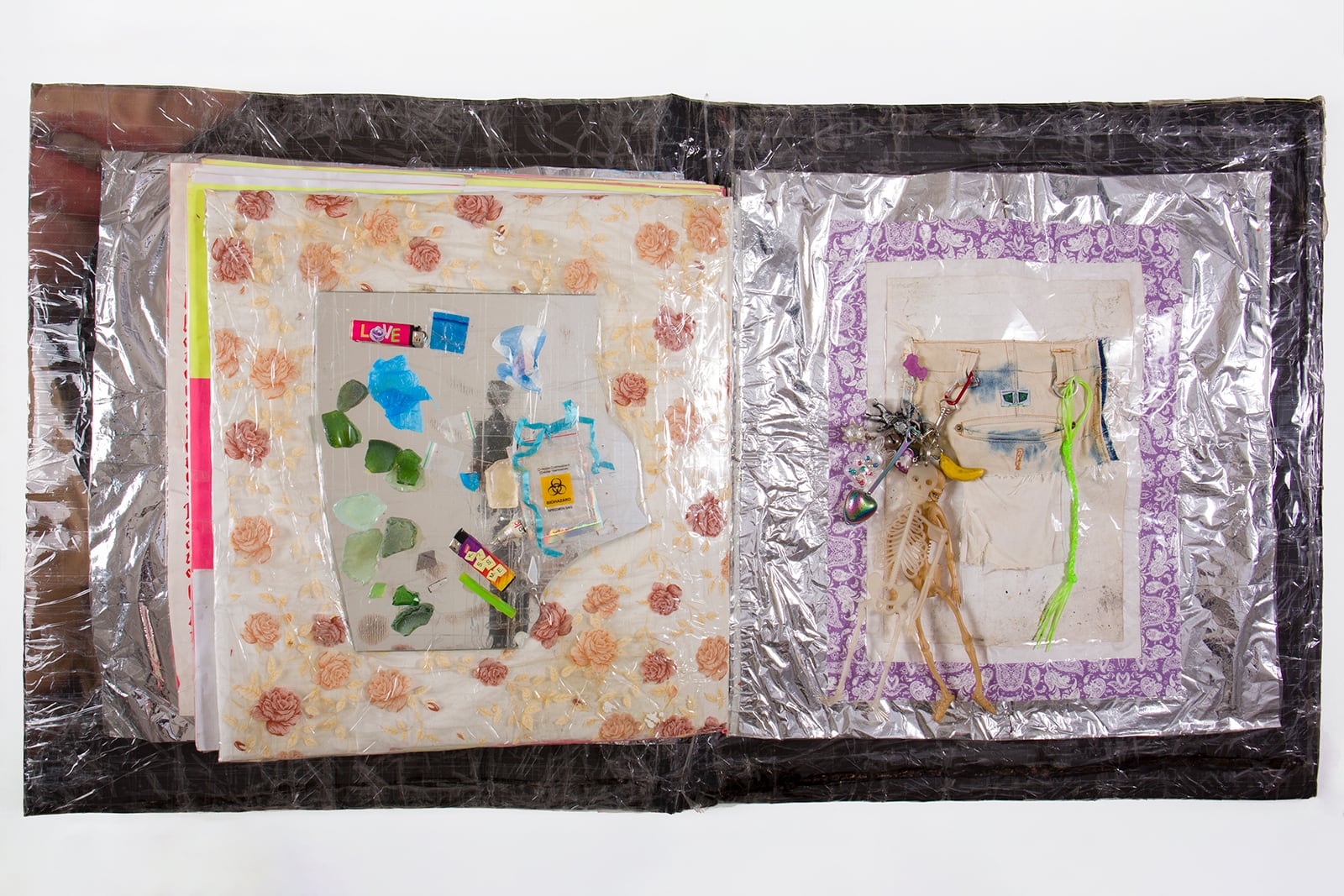 Thomas Cap de Ville, LIVRE 3, 2017, garbage bags, scotch tape, shells, ceramics, plastics, metal, mirrors, stones, lettering, aluminum foil, fabrics, Polaroids, photo prints, paper prints, stickers, colored pencils, ballpoint pens, felt pens, Poscas, blood, red ink, oil pastels, key rings, jewelry, 80 X 160 cm (open). Courtesy of the artist and Exo Exo
Thomas Cap de Ville, LIVRE 3, 2017, garbage bags, scotch tape, shells, ceramics, plastics, metal, mirrors, stones, lettering, aluminum foil, fabrics, Polaroids, photo prints, paper prints, stickers, colored pencils, ballpoint pens, felt pens, Poscas, blood, red ink, oil pastels, key rings, jewelry, 80 X 160 cm (open). Courtesy of the artist and Exo Exo
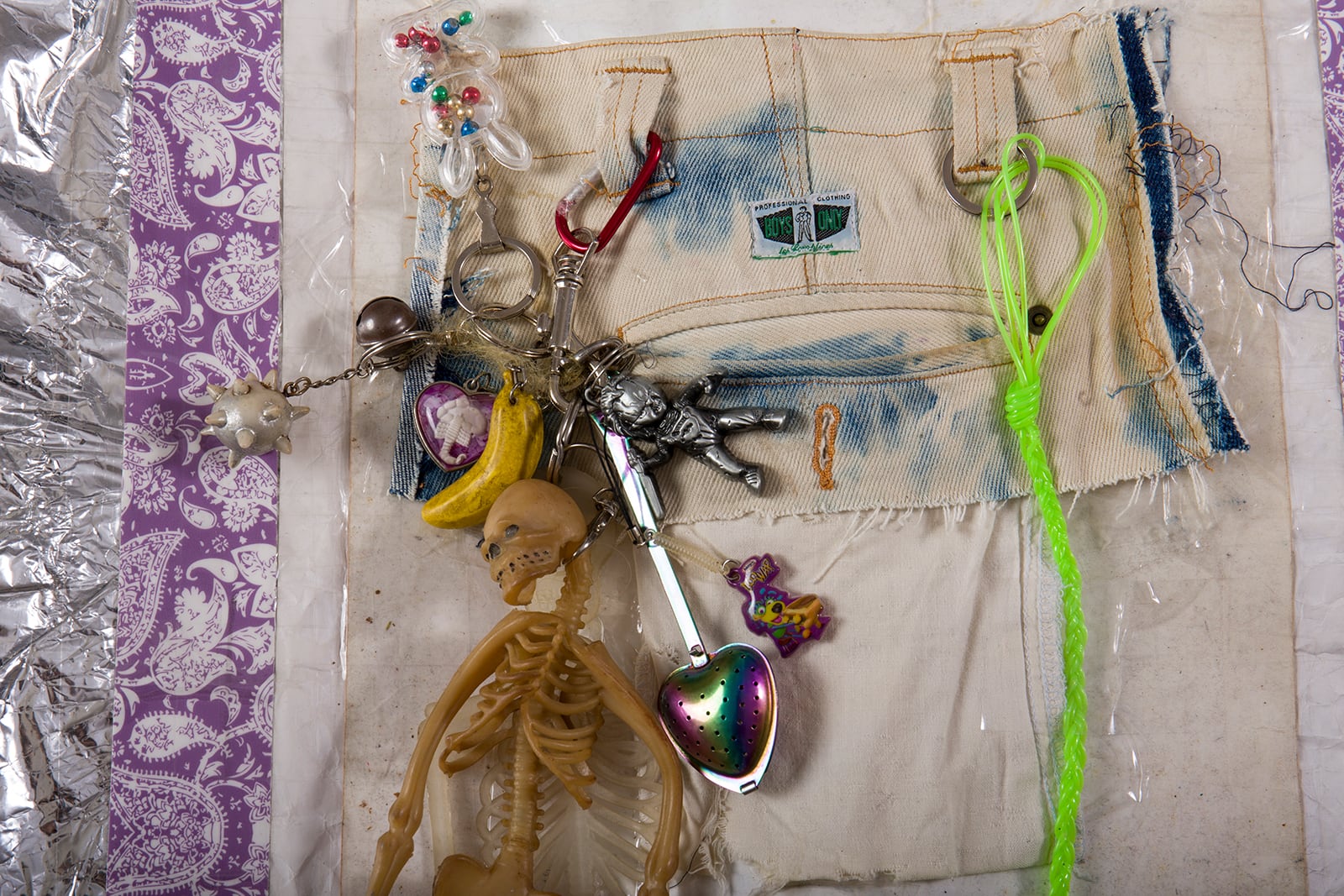 Thomas Cap de Ville, LIVRE 3, 2017, garbage bags, scotch tape, shells, ceramics, plastics, metal, mirrors, stones, lettering, aluminum foil, fabrics, Polaroids, photo prints, paper prints, stickers, colored pencils, ballpoint pens, felt pens, Poscas, blood, red ink, oil pastels, key rings, jewelry, 80 X 160 cm (open). Courtesy of the artist and Exo Exo
Thomas Cap de Ville, LIVRE 3, 2017, garbage bags, scotch tape, shells, ceramics, plastics, metal, mirrors, stones, lettering, aluminum foil, fabrics, Polaroids, photo prints, paper prints, stickers, colored pencils, ballpoint pens, felt pens, Poscas, blood, red ink, oil pastels, key rings, jewelry, 80 X 160 cm (open). Courtesy of the artist and Exo Exo
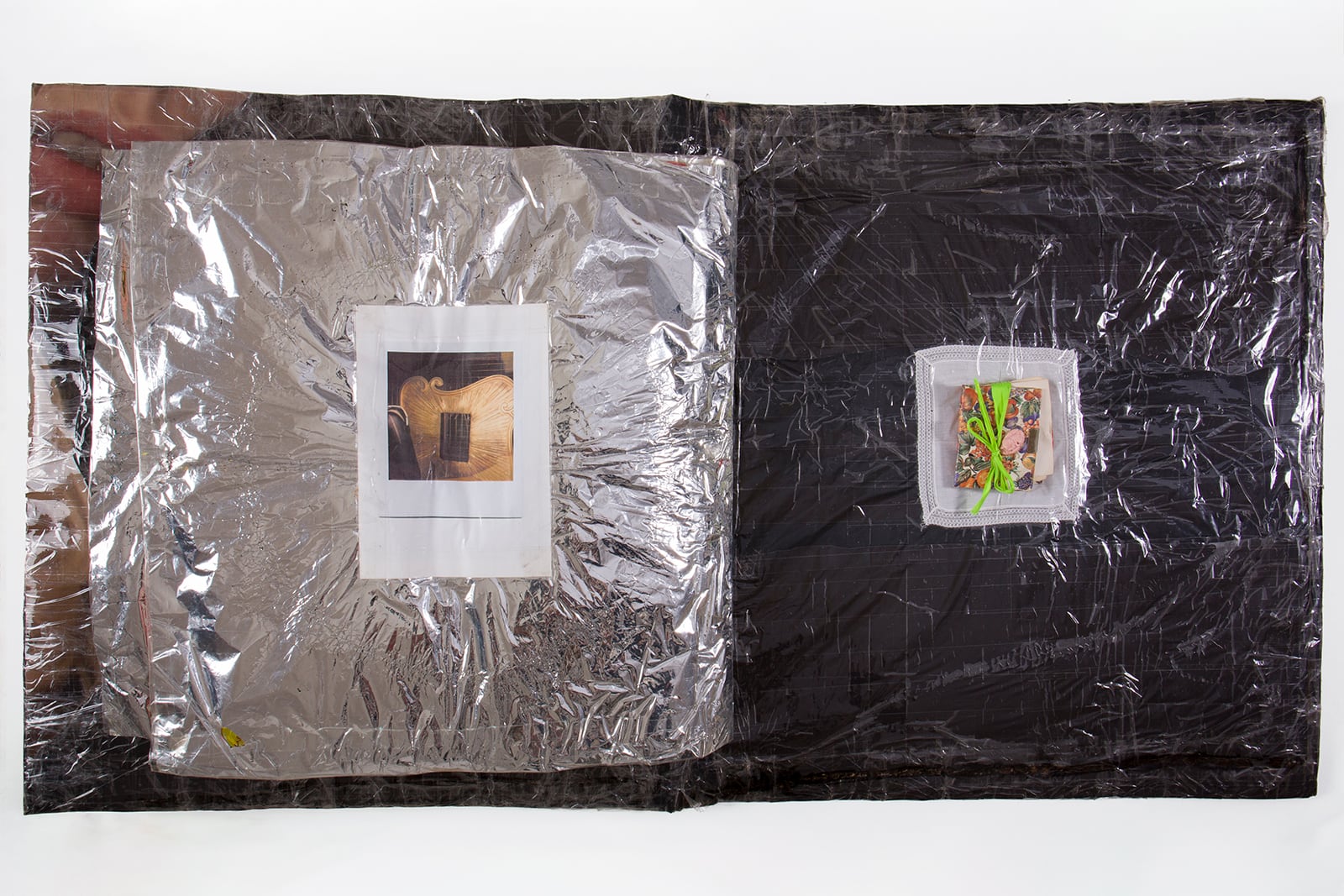 Thomas Cap de Ville, LIVRE 3, 2017, garbage bags, scotch tape, shells, ceramics, plastics, metal, mirrors, stones, lettering, aluminum foil, fabrics, Polaroids, photo prints, paper prints, stickers, colored pencils, ballpoint pens, felt pens, Poscas, blood, red ink, oil pastels, key rings, jewelry, 80 X 160 cm (open). Courtesy of the artist and Exo Exo
Thomas Cap de Ville, LIVRE 3, 2017, garbage bags, scotch tape, shells, ceramics, plastics, metal, mirrors, stones, lettering, aluminum foil, fabrics, Polaroids, photo prints, paper prints, stickers, colored pencils, ballpoint pens, felt pens, Poscas, blood, red ink, oil pastels, key rings, jewelry, 80 X 160 cm (open). Courtesy of the artist and Exo Exo
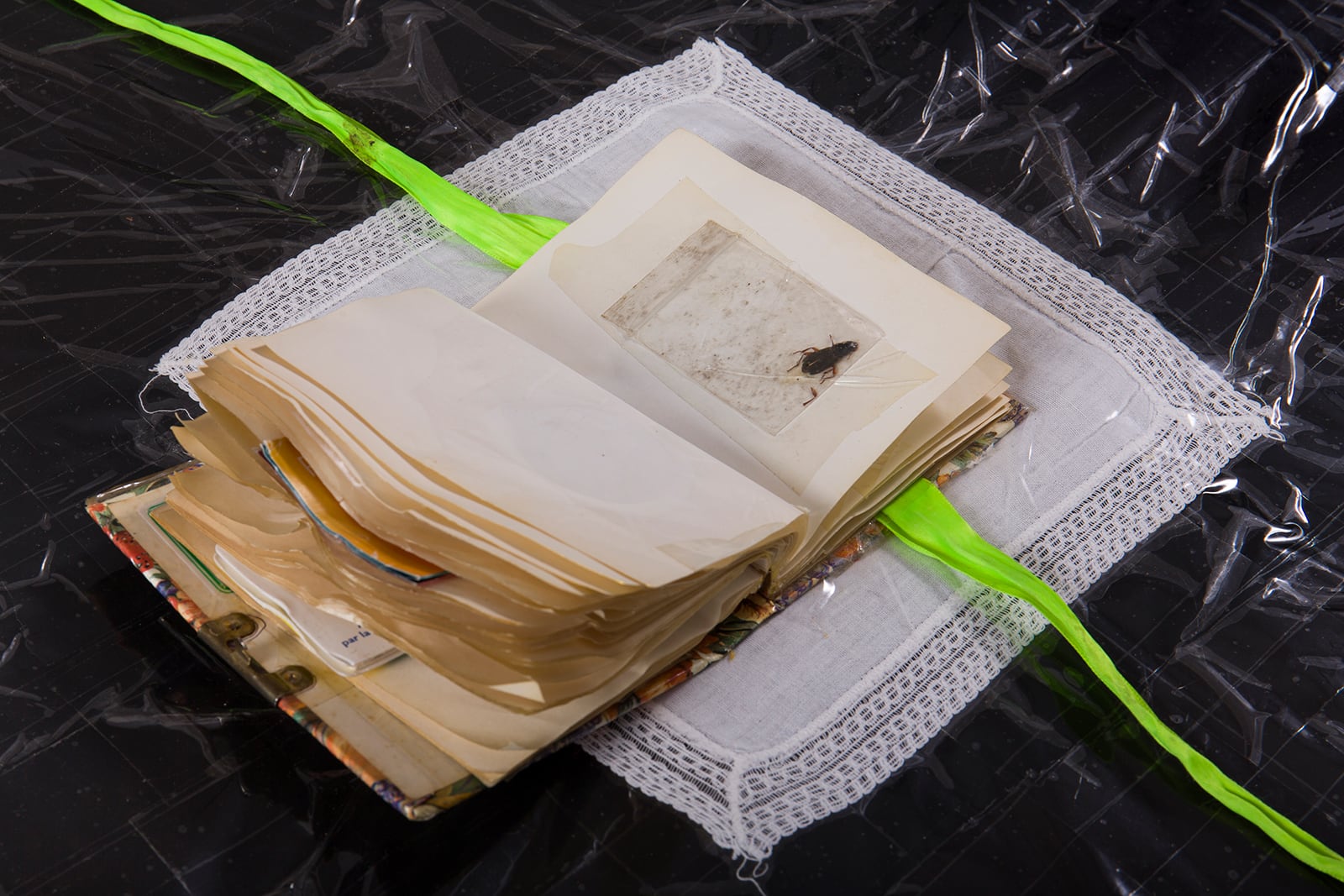 Thomas Cap de Ville, LIVRE 3, 2017, garbage bags, scotch tape, shells, ceramics, plastics, metal, mirrors, stones, lettering, aluminum foil, fabrics, Polaroids, photo prints, paper prints, stickers, colored pencils, ballpoint pens, felt pens, Poscas, blood, red ink, oil pastels, key rings, jewelry, 80 X 160 cm (open). Courtesy of the artist and Exo Exo
Thomas Cap de Ville, LIVRE 3, 2017, garbage bags, scotch tape, shells, ceramics, plastics, metal, mirrors, stones, lettering, aluminum foil, fabrics, Polaroids, photo prints, paper prints, stickers, colored pencils, ballpoint pens, felt pens, Poscas, blood, red ink, oil pastels, key rings, jewelry, 80 X 160 cm (open). Courtesy of the artist and Exo Exo
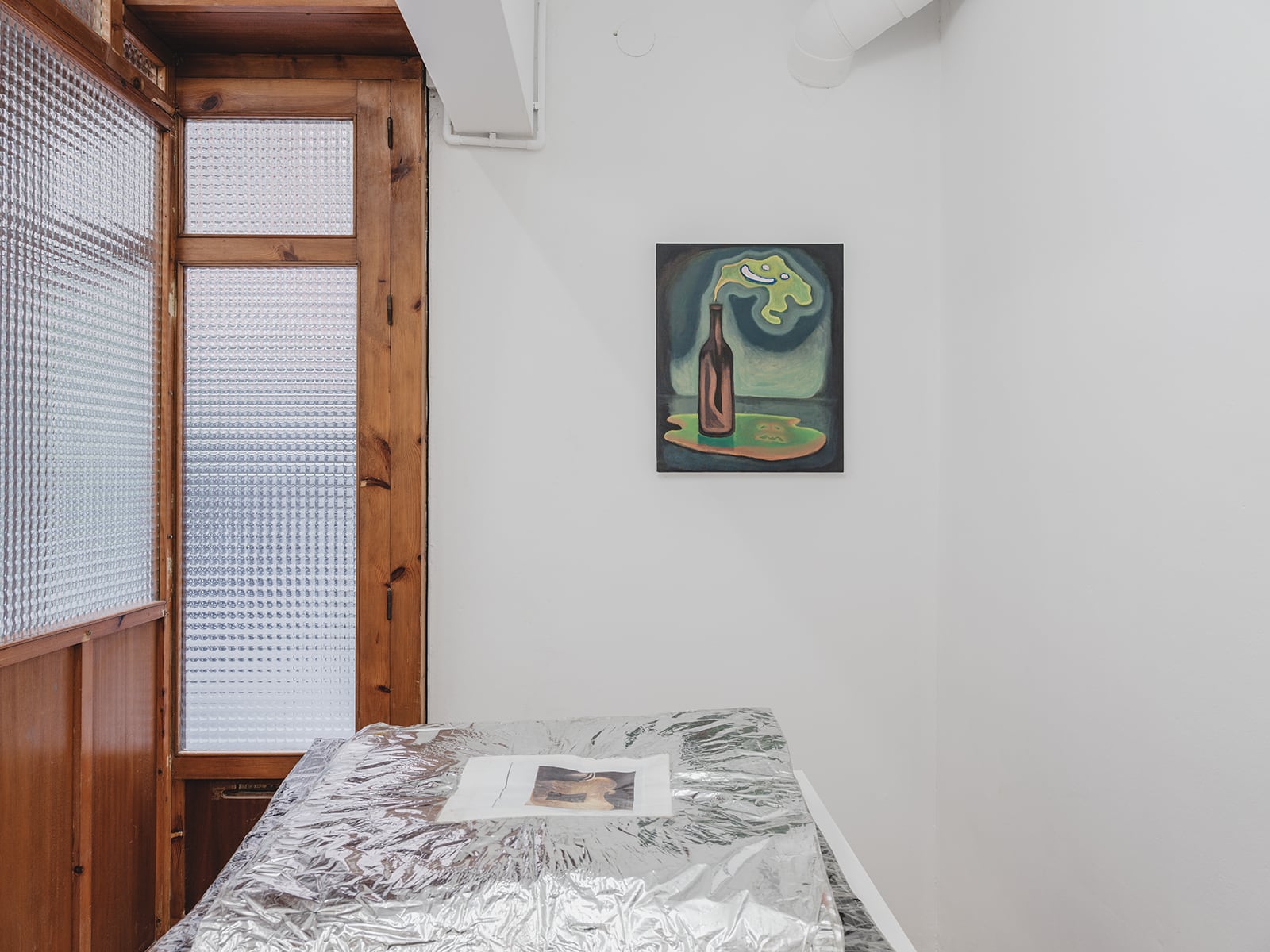 Exhibition view
Exhibition view
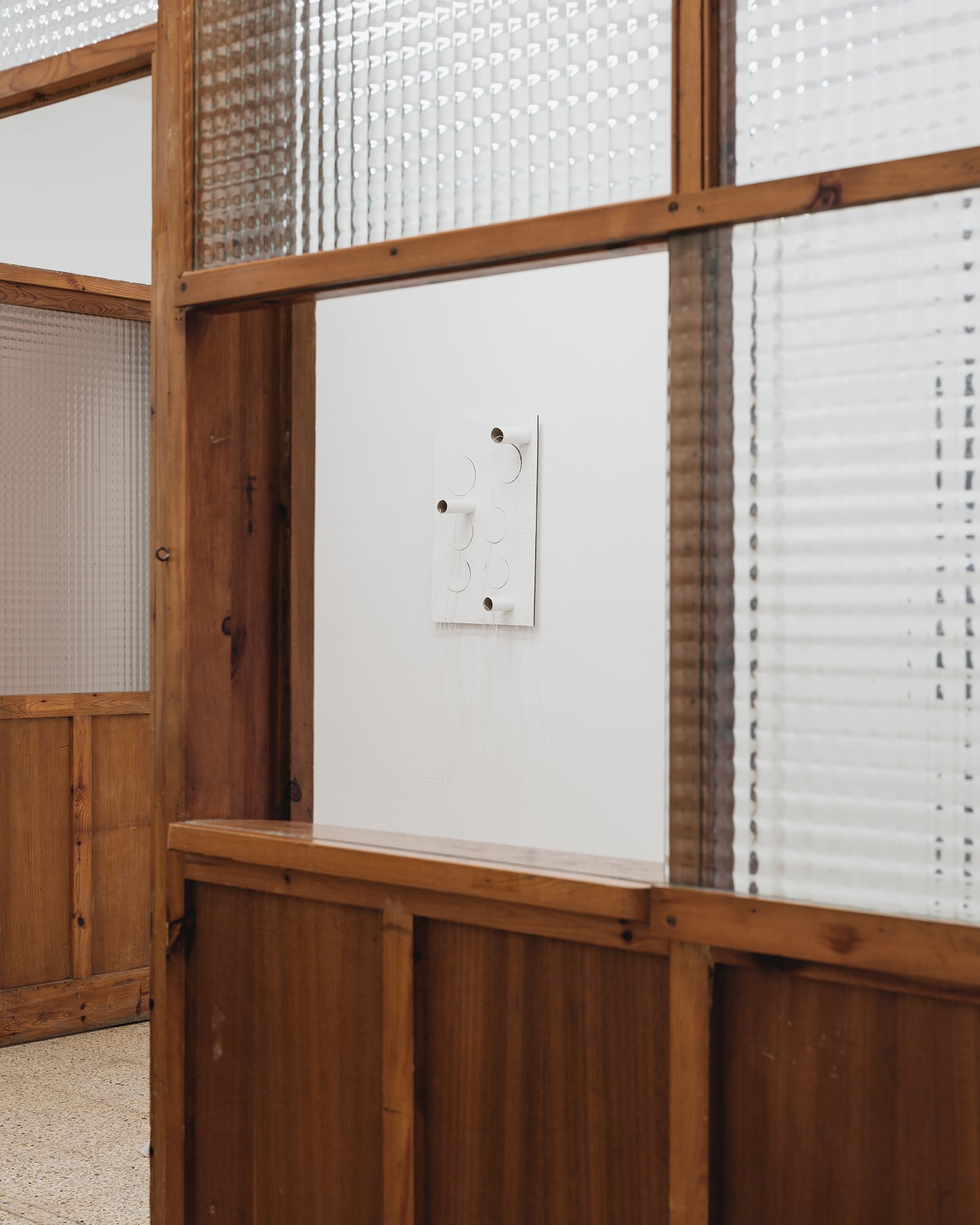 Exhibition view
Exhibition view
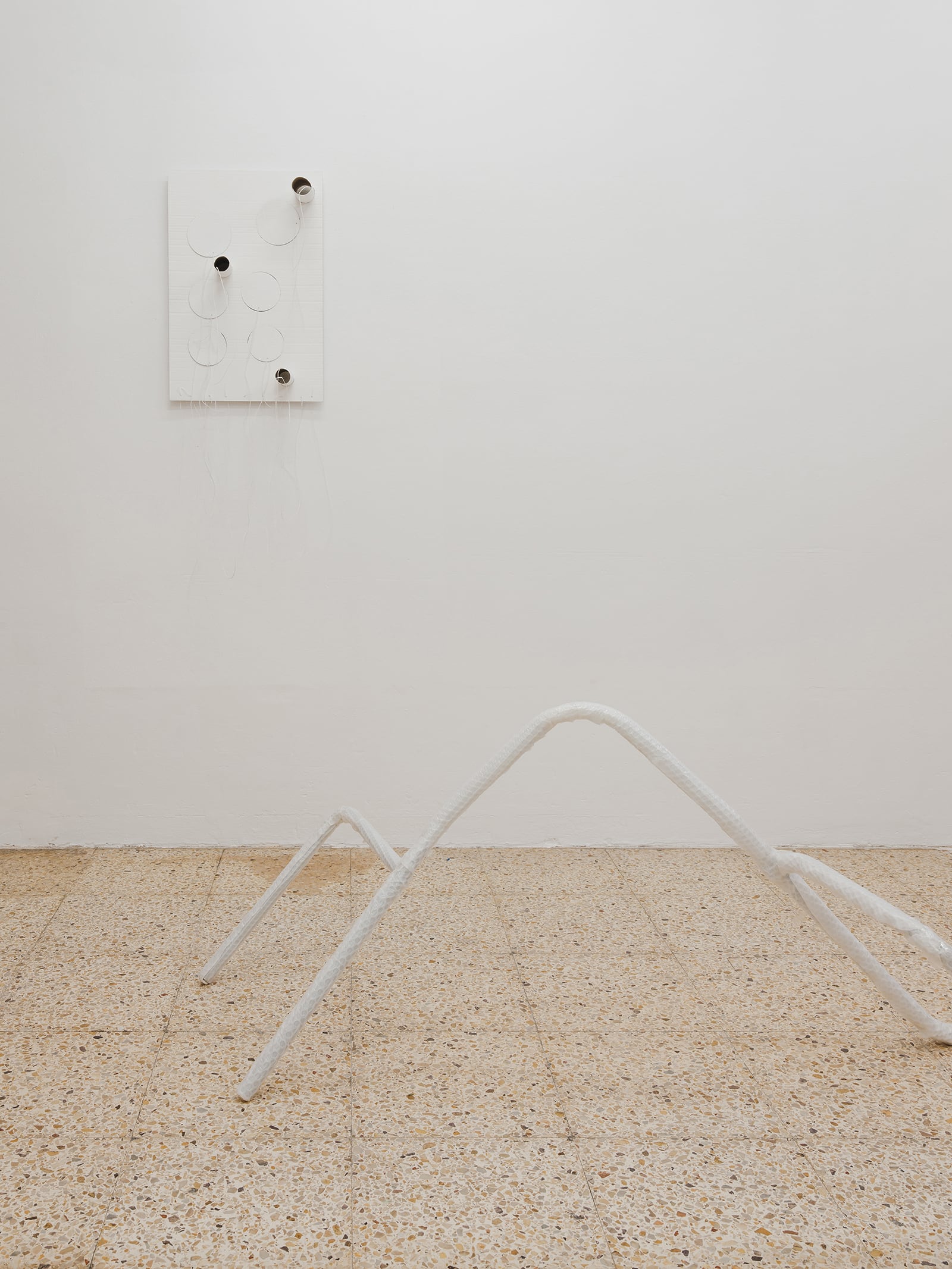 Clémentine Adou, Awaken, (white), 2017, cardboard, paint, inkjet print, string, 38 x 130 cm
Clémentine Adou, Awaken, (white), 2017, cardboard, paint, inkjet print, string, 38 x 130 cm
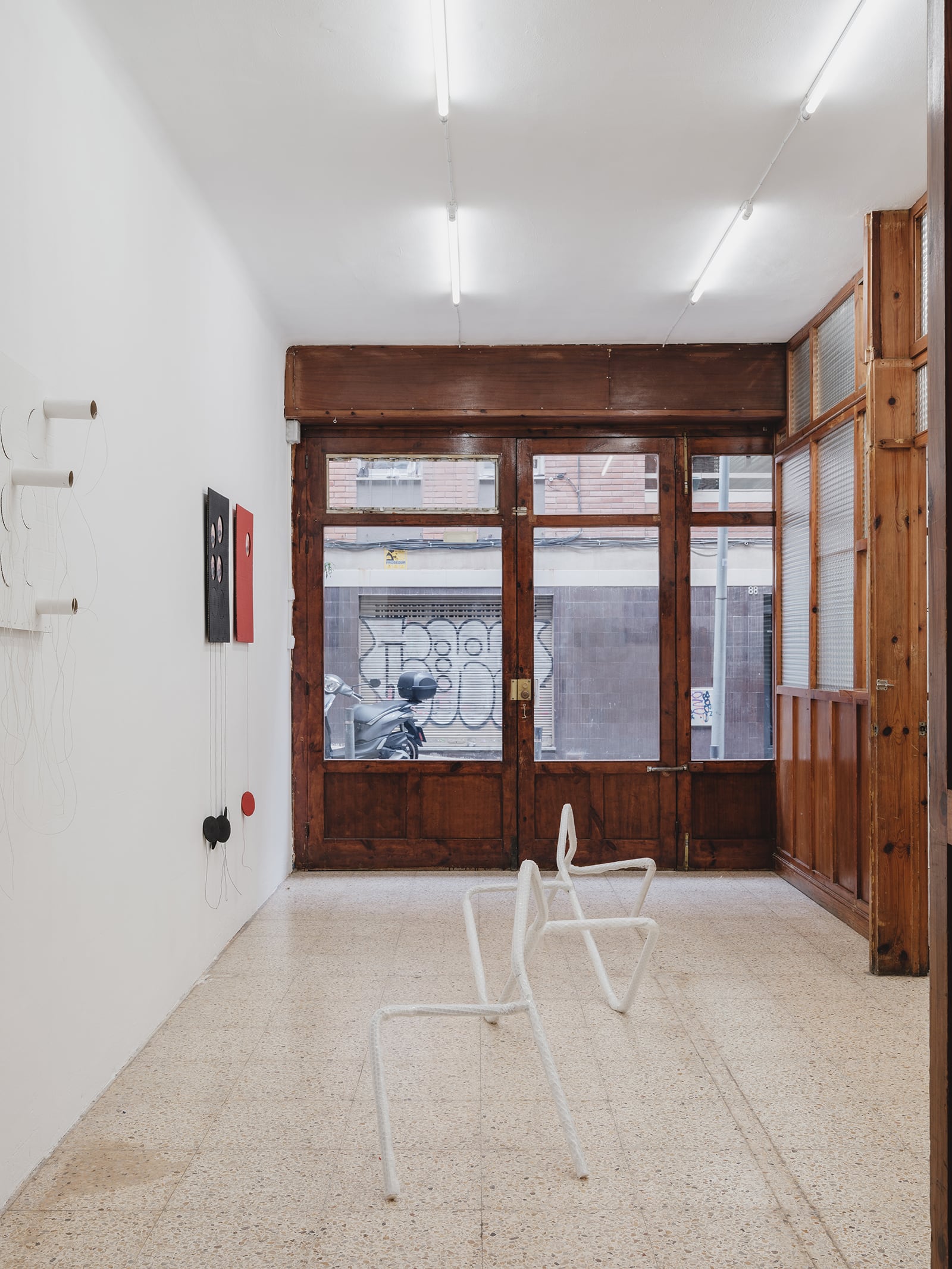 Exhibition view
Exhibition view
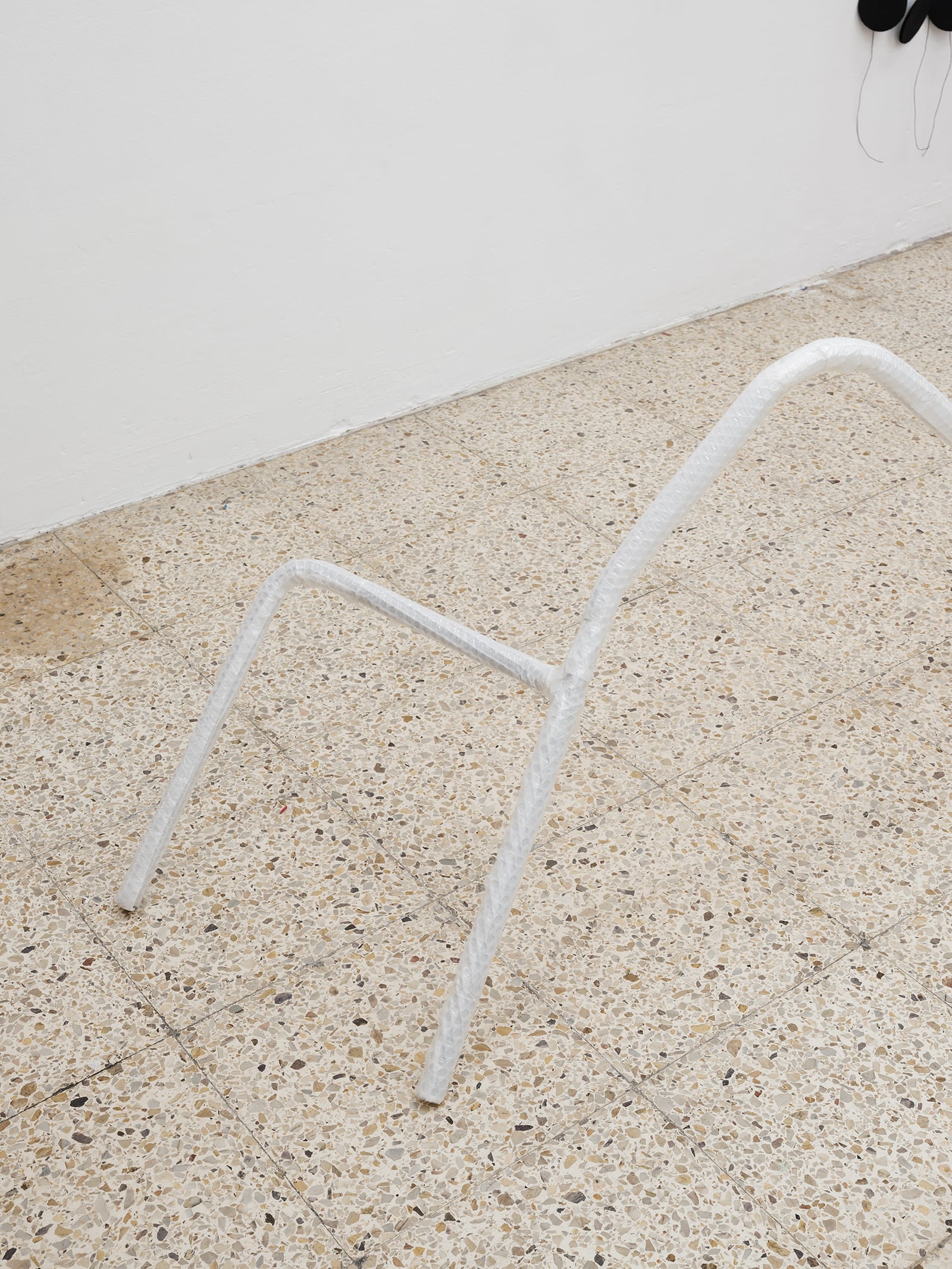 Álex Palacín, Cranc, 2022, detail
Álex Palacín, Cranc, 2022, detail
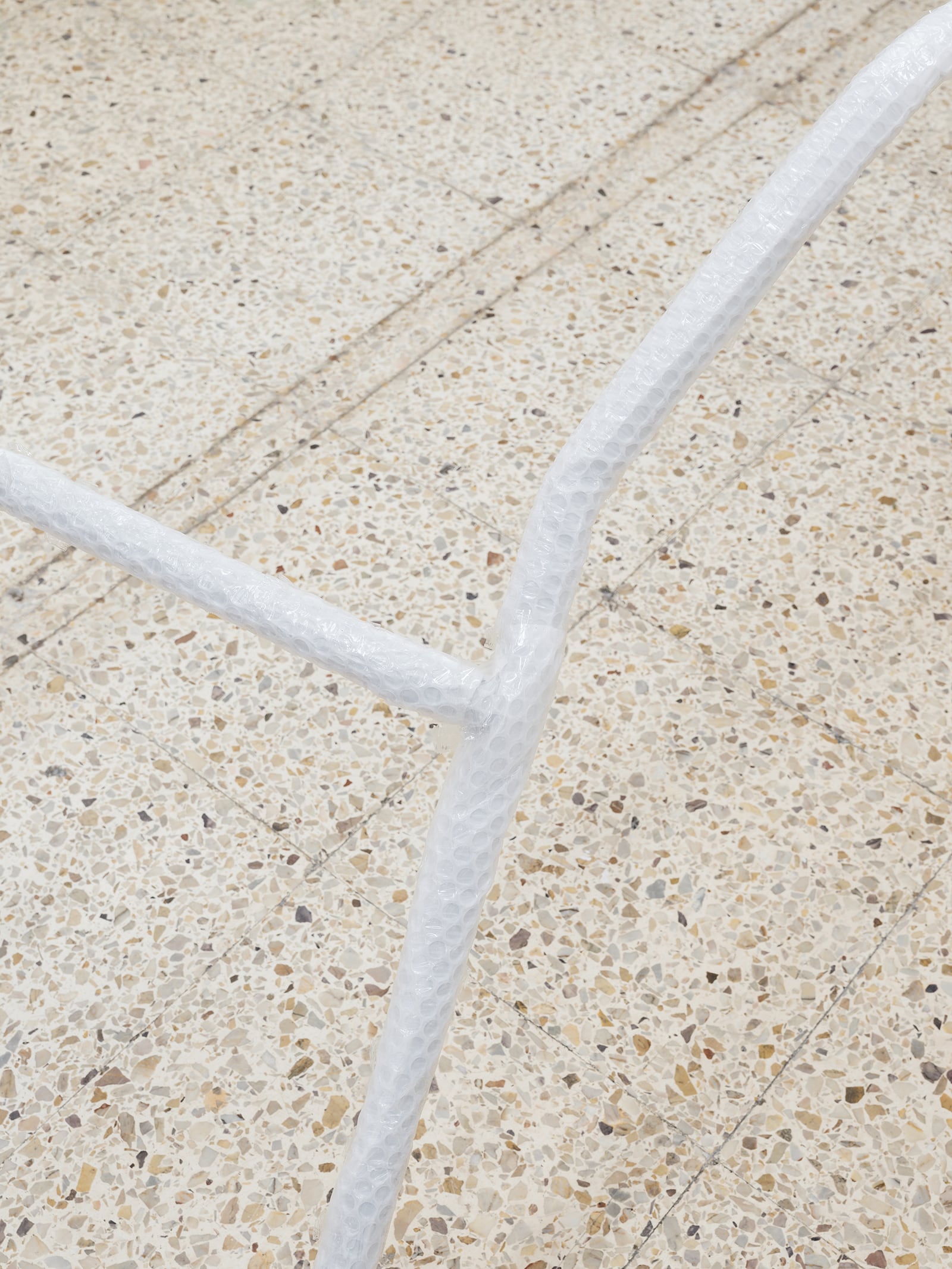 Álex Palacín, Cranc, 2022, detail
Álex Palacín, Cranc, 2022, detail
Disease, mescaline, emotional shock, aesthetic experience and mystical enlightenment have the power, each in its different way and in varying degrees, to inhibit the functions of the normal self and its ordinary brain activity, thus permitting the “other world” to rise into consciousness. [1]
In most normative systems deviance emerges as a cure. Whether a form appears to be moral or immoral has nothing to do with what it is in essence.
In Brandon Cronenberg’s film Antiviral (2012), the shifts of capitalism have bred a new medico-masochist erotism. The Lucas Clinic’s offers its clients an appropriating experience of celebrities’ bodies by commercialising their viruses, germs and parasites. Because sanitisation is the current trend, with clean girls and physical distancing, we are possibly already developing this sort of kink.
The measures taken by governments and businesses to curb the health crisis have recently accelerated the transformation process that conditions our taste : “it is our way of desiring that has gone into crisis” [2]. Paul B. Preciado observes a radical rupture with the fordist aesthetic - which is characterised by speed, productivity, violence and noise - due to bodies being assigned to stay home. At the same time, new technologies are making the domestic space gradually more and more porous while the intimate and the practices belonging to it are shifting.
Our appreciation of forms has already begun to diverge, mutate, and flee the iconographic and phantasmagorical organisation inherited from the capitalist regime. Let’s put ourselves for a moment in the narrative and carnal reading approach of this idea. Imagine that desire, aspiration, the state of lack or love, is ill. Its survival instinct pushing on the edges of forms to the point of nausea.
Here, the form fever is the possibility of a perplexed state, of an interstice between interior and exterior, between the past and present, reality and fantasy. The presented works evoke tensions, paradoxes, and are the poetic emanations of what Aldous Huxley ironically called “the human catacomb” [3], a world of symbols lit by neon lights, that in our story may be coming to an end.
—
1. Excerpt from a correspondence with Dr Osmond dated April 1, 1953 - HUXLEY, Aldous. Moksha: Aldous Huxley’s Classic Writings on Psychedelics and the Visionary Experience. Rochester, 1977, 1999 Michael Horowitz, Cynthia Palmer.
2. LE GOÛT DE M, # Paul B. Preciado 2/2 [podcast]. Géraldine Sarratia (Genre Idéale), mai 2023, 37:39 min 06.
3. HUXLEY, Aldous, The Doors of Perception. 2001, 10/18.